Travelling to Australia with children on an ETA or eVisitor visa
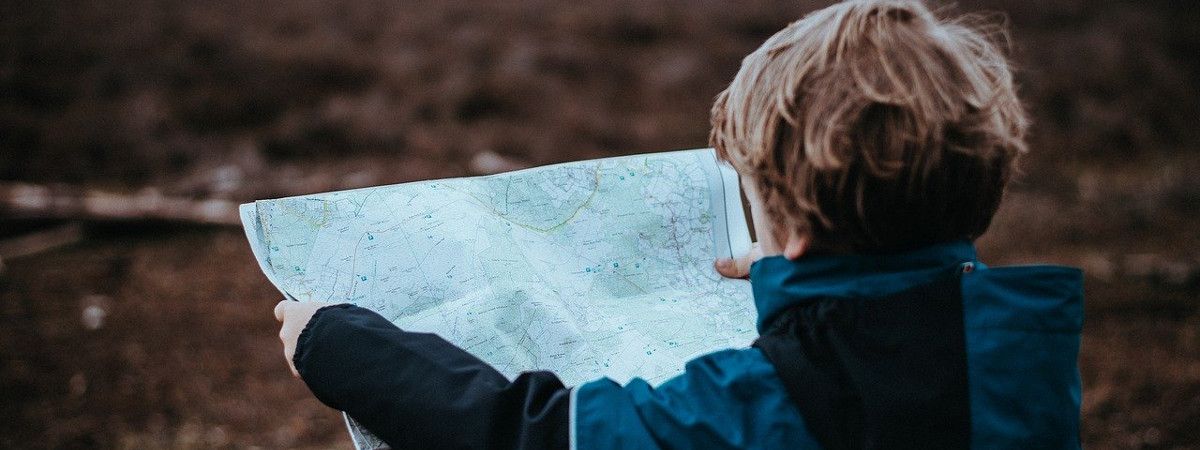
Anyone wishing to enter Australian territory needs to apply for and obtain a visa prior to departure. If you decide to travel to Australia and you’re not an Australian passport holder, you will need to get a visa for yourself and your family.
Many parents may wonder whether their children can be added to their visa or if they will need to apply for a separate travel authorisation. This article will explain how to travel to Australia with kids so that you will go through passport control hassle-free.

Do children need a visa for Australia?
All foreigners, regardless of their age, must hold a valid visa to enter the country. The type of Australian visa that you and your children will need to apply for will depend on your specific circumstances, nationality, and travel plans.
If you are visiting Australia for tourism short-term, the quickest and easiest visas you may be able to apply for are the Electronic Travel Authorisation (ETA) and the eVisitor visa.
At the border , each foreigner will need to present a printed copy of their visa to the border control officers together with the passport they used during the application and the Incoming Passenger Card they will have been provided with during travel.
Australian visas for minors: the ETA
The Australian ETA is an electronic permission to travel. This means that you won’t need to visit an Australian embassy or consulate and will be able to apply for your travel authorisation completely online .
As long as you have access to a reliable internet connection and keep your supporting documents at hand, you should be able to complete the ETA application in minutes.
Unless they hold an Australian passport, your children will need to apply for a separate ETA . Each minor will have to submit an individual ETA application and all applicants need to meet the visa requirements for Australia .
- Minor has their own passport : Help your child complete their separate ETA application and enter their passport details.
- Minor is on a parent’s passport :Help your child complete their individual ETA application. Enter your passport details — or the details of the passport where the minor is featured — but use the minor’s personal information (name, date of birth, country of birth) as they appear on the passport.
How can minors apply for the eVisitor visa for Australia?
The ETA travel authorisation and eVisitor visa for Australia are very similar in their requirements and application process. Again, the eVisitor application can be completed entirely online from anywhere in the world . You’ll only need your passport, a valid email address, the application fee, and relevant supporting documents.
All travellers need to submit a separate eVisitor application if they wish to travel to Australia with this visa. Therefore, all your children must complete an individual application.
The steps to complete an eVisitor application for a minor are the same as the ETA steps mentioned above.
Can I sponsor my child’s trip to Australia?
Please note that it’s not possible to sponsor family members on short-term visas like the ETA and eVisitor visas. As mentioned before, each family member must obtain their own travel permit.
However, in many cases, it’s possible for parents on permanent visas to sponsor their children for migration purposes to Australia. This is not an automatic process and there’s no guarantee that the application will be granted.
Besides meeting all the legal requirements for migration to Australia, the child must be:
- Natural, adopted, or stepchild of an Australian citizen or of the holder of an Australian permanent visa, or an eligible New Zealand citizen
- Dependant on the sponsor. This means that the child must depend completely or in great part on the sponsor for financial support
- Under 25 years of age when the application is submitted. If the child is over 18, they must also be a full-time student and financially dependent on the sponsor
- Unmarried, not engaged, and not in a de-facto relationship
When travelling to Australia with children, you should also ensure that you are up-to-date with any additional requirements.
Related Posts

Extending a tourist visa for Australia

Travel to Australia with a criminal record

Being a digital nomad in Australia: visa options and advice
Fast and Easy Visitor Visa Applications
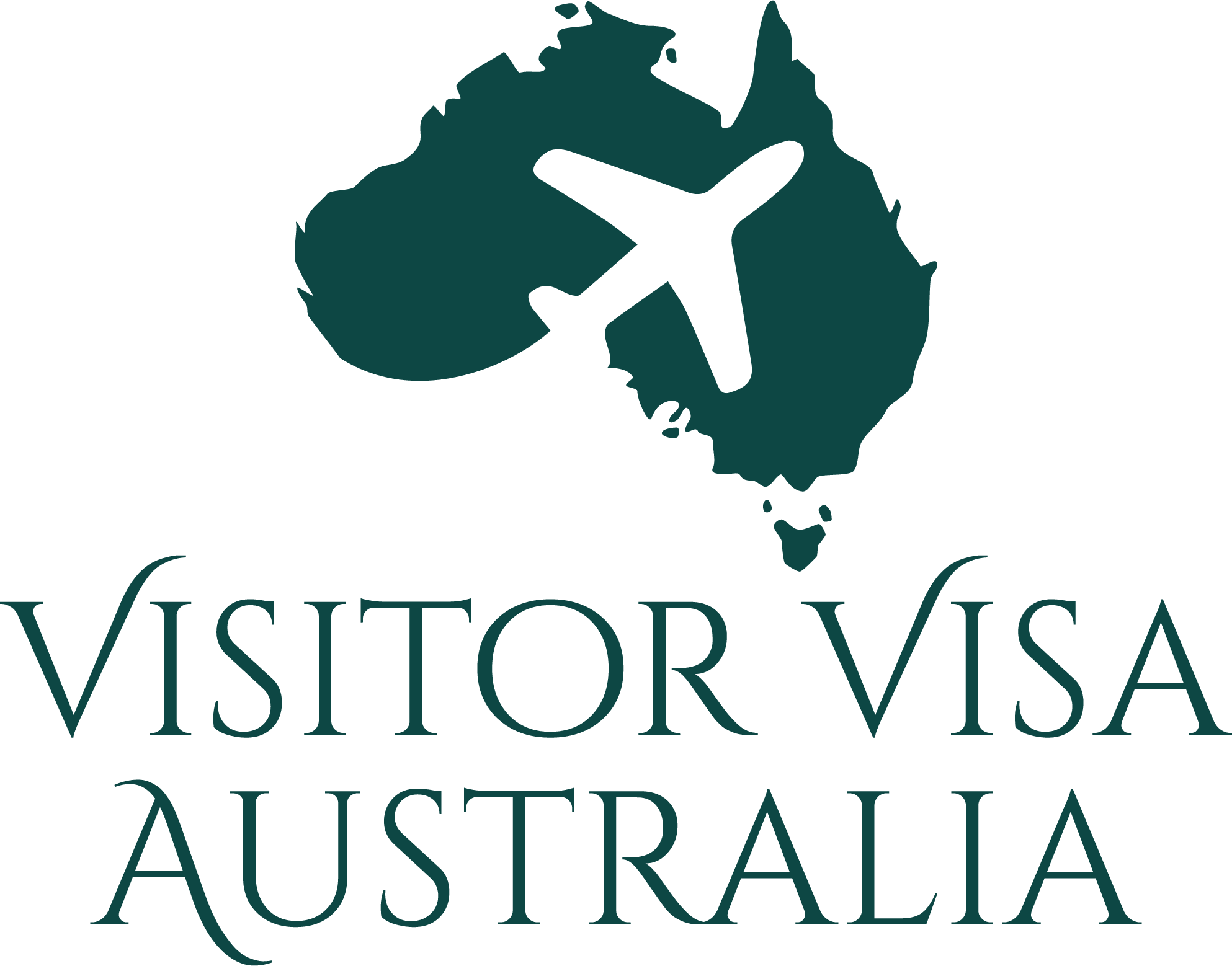
Visitor Visa for Child Under 18 to Australia
- May 13, 2024
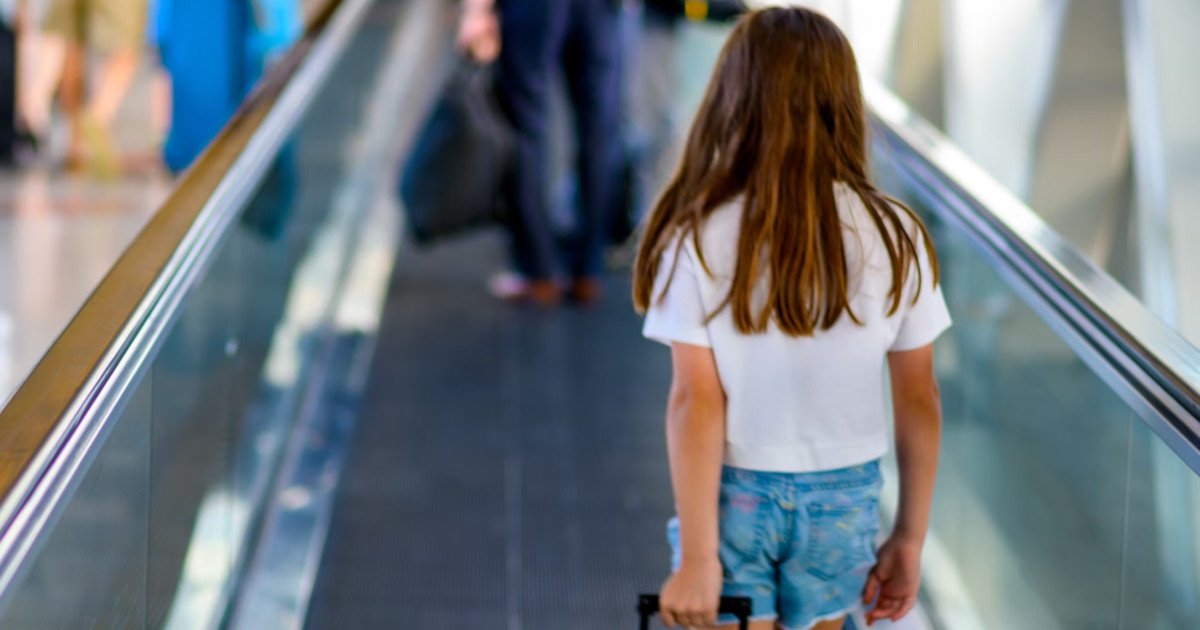
If you are planning to bring a child under the age of 18 to Australia as a visitor, there are some specific requirements and considerations that you will need to take into account. For a subclass 600 visa, both parents (or all people with custody of the child) must provide their consent for the child to travel to Australia if both parents are not travelling with the child.
Visitor visa for child under 18 to Australia
Here is a step-by-step guide to help you obtain a child tourist visa to Australia :
- Determine the type of visa required: The first step in obtaining a visitor visa for a child under 18 is to determine the type of visa that is required. In most cases, a visitor visa will be sufficient for a short-term stay in Australia for tourism or visiting family and friends. However, if the child will be participating in activities such as study or work, a different type of visa may be required.
- Gather the necessary documents: To apply for a visitor visa, you will need to provide certain documents to support your application. This may include:
- A valid passport for the child
- Birth certificate or other proof of the child’s identity
- A certified copy of the child’s birth certificate
- A certified copy of the passport of the parent not travelling with the child
- Child travel consent form Australia (or travel consent form for minor Australia) : Signed Form 1229 by the non-travelling parent (Consent form to grant an Australian visitor visa to a child under the age of 18 years)
- Evidence of the child’s relationship to the person responsible for their welfare while in Australia (if applicable)
- A letter of consent from the person with parental responsibility for the child (if applicable)
- Evidence of the purpose of the visit, such as a letter of invitation from a host in Australia or confirmation of travel arrangements
- Evidence of sufficient financial means to support the child’s stay in Australia, such as bank statements or pay stubs
- Complete the visa application: Once you have gathered all of the necessary documents, you will need to complete the online visa application form. You may be required to provide additional information or documents during the application process.
- Pay the visa application fee: You will need to pay a fee to apply for a visitor visa for a child under 18. The amount of the fee will depend on the specific circumstances of your application.
- Submit the application: Once you have completed the application form and paid the fee, you will need to submit the application. You may be required to attend an interview or provide additional information or documents as part of the application process.
- Wait for a decision: Once you have submitted your application, you will need to wait for a decision to be made. The processing time for a visitor visa for a child under 18 can vary, so it is important to plan ahead and apply well in advance of your intended travel date.
How to fill out form 1229
This is the form that needs to filled out if one parent of the child will not be accompanying the child to Australia. It does depend on your custody orders so double check the form to see if it applies to you. Otherwise, it’s a pretty straightforward form, requiring the details of the child and their parents.
Overall, obtaining a visitor visa for a child under 18 to Australia requires careful planning and attention to detail. By gathering the necessary documents and completing the application process accurately, you can increase your chances of success in obtaining a visa for your child.
- Family and Parent Visitor Visas
- Holiday Visa
- Invitation Letters
- Marriage and Partner Visas
- Sponsored Visitor Visa
- Tourist Visa
- Tourist Visas and Partner Visas
- Visitor Visa
You might also like
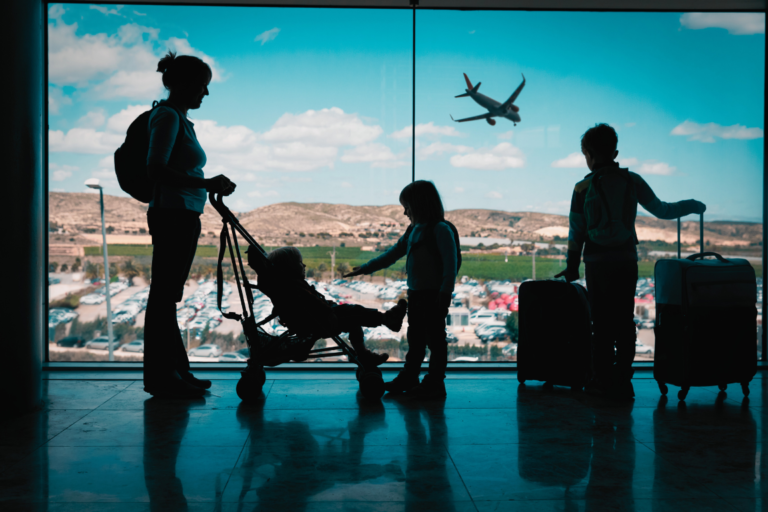
Family Sponsored Stream – Visitor visa 600
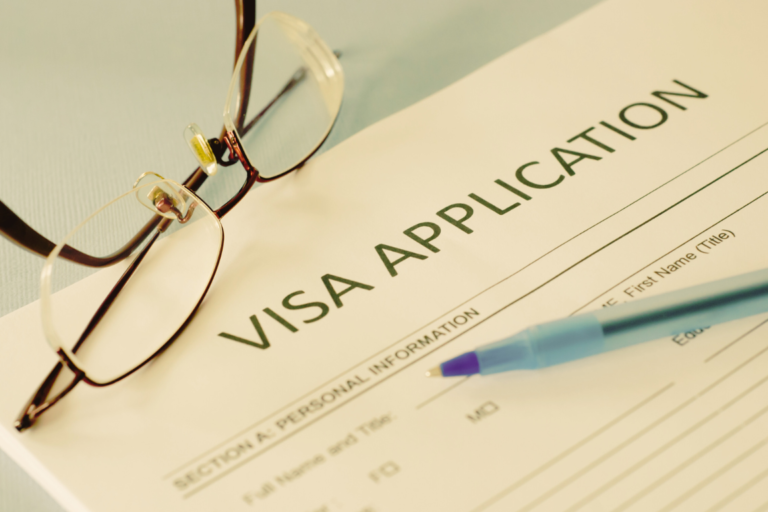
Visa Condition 8501 (Subclass 600)

Overseas Visitors Health Cover

Australia's Child Visas: Securing the Future of Young Lives
Welcome to the definitive guide on Australia’s Child Visas, your compass in the journey to provide a nurturing family environment for children. Our guide explores various child visa categories, outlining their purposes, application processes, and impacts. These visas embody Australia’s commitment to children’s welfare and rights. If you’re looking to offer a stable home or support a child, our guide will provide clear, empathetic information throughout.
Child Visa (Subclass 101)
The Child Visa (Subclass 101) reunites families, enabling overseas children to join their parents in Australia. It promotes family unity and support, offering children access to education and healthcare. This visa creates a path for children to build bright futures in Australia, under their parents’ care, strengthening family bonds and enriching Australian society.
Who it’s for: Children outside Australia, aiming to join their parents who are Australian citizens, eligible New Zealand citizens, or Australian permanent visa holders.
Stay: Offers permanent residency in Australia.
Key Features:
- Enables children to migrate as permanent residents.
- Provides access to education and Medicare.
- Potentially leads to Australian citizenship.
Eligibility Requirements:
- Children must depend on a parent who is an Australian citizen, eligible New Zealand citizen, or Australian permanent visa holder.
- Age criteria: under 18 years, full-time students aged 18 to 25 who depend financially on their parent, or those over 18 who are unable to work due to a disability.
- Applicants must be single and dependent, applying from outside Australia.
Child Visa (Subclass 802)
The Child Visa (Subclass 802) offers children in Australia a path to permanent residency and stable family life. It caters to children wishing to live with their Australian-citizen or permanent-resident parents. The visa supports their education, healthcare access, and potential citizenship.
Who it’s for: Children in Australia wanting to stay permanently with their parents, who are Australian citizens, eligible New Zealand citizens, or Australian permanent visa holders.
Stay: Grants permanent residency.
- Allows children to stay as permanent residents.
- Offers access to education and Medicare.
- Children may apply for Australian citizenship.
- Age criteria: under 18 years, full-time students aged 18 to 25, or those over 18 who cannot work due to a disability.
- Applications must be made and decided while the child is in Australia.
Adoption Visa (Subclass 102)
he Adoption Visa (Subclass 102) enables internationally adopted children to join their Australian families. It provides a stable home, education, and healthcare. This visa fosters nurturing family environments and helps children integrate into Australian society, offering permanent residency and potential citizenship.
Who’s it for: Children adopted outside Australia, joining their adoptive Australian parents.
Stay: Confers permanent residency.
- Grants permanent residency to adopted children.
- Ensures access to education and Medicare.
- Opens the path to Australian citizenship.
- Children must have been under 18 at the time of adoption, application, and visa decision.
- Applications and decisions must be made when the child is outside Australia.
- The child must be adopted, or in the adoption process, by the sponsoring parent.
Dependent Child Visa (Subclass 445)
The Dependent Child Visa (Subclass 445) sustains family unity during a parent’s migration process. It enables dependent children to accompany their parents to Australia, ensuring continuity in their education and personal development. This temporary visa plays a key role in keeping families together during complex migration periods.
Who’s it for: Children joining or accompanying parents in Australia during their permanent Partner visa process.
Stay: Temporary, until the parent’s permanent visa decision.
- Allows children to join or remain with their parents in Australia.
- Permits travel, work, and study in Australia.
- Ensures the child’s welfare during the parent’s visa process.
- Children must depend on a visa-holding parent.
- They must be sponsored by the parent’s visa nominator or sponsor.
Orphan Relative Visas (Subclass 117) - Sheltering Orphans Globally
The Orphan Relative Visa (Subclass 117) offers a compassionate route for orphaned children to unite with relatives in Australia. It provides these vulnerable children with security, care, and stability. This visa ensures the well-being of children who have lost parental care and facilitates their integration into Australian society as permanent residents.
Who’s it for: Orphaned children seeking a stable home with relatives in Australia.
Stay: Provides permanent residence.
- Grants permanent residency to orphans.
- Allows access to education and Medicare.
- Children must be under 18, single, and without parental care.
- Applicants must have a relative who is a settled Australian citizen, eligible New Zealand citizen, or Australian permanent resident.
- Applications and decisions must be made while the child is outside Australia.
Orphan Relative Visas (Subclass 837) - Supporting Orphans in Australia
The Orphan Relative Visa (Subclass 837) is a vital pathway for children in Australia lacking parental support. It allows these children to stay permanently with a relative, offering them a nurturing and stable environment. This visa demonstrates Australia’s dedication to protecting the rights and well-being of vulnerable children within its community.
Who’s it for: Orphaned children already in Australia in need of a stable family environment.
Stay: Grants permanent residence.
- Provides permanent residency to children without parental care.
- Eligibility for Australian citizenship under specific criteria.
- Children must be under 18 years, single, and lacking parental care.
- The application and decision processes must occur while the child is in Australia but not in immigration clearance.
Frequently Asked Questions About Child Visas
What are the eligibility criteria for the Child Visa (Subclass 101/802)? Eligibility includes being a dependent child of an Australian citizen or permanent resident, meeting health and character requirements, and having the consent of legal guardians.
How does the Adoption Visa (Subclass 102) work? It’s for children adopted outside Australia by Australian citizens or permanent residents.
What is the Dependent Child Visa (Subclass 445) for? It’s for dependent children of temporary partner visa holders who didn’t include the child in their original visa application.
Can I apply for an Orphan Relative Visa if I’m in Australia? Yes, the Orphan Relative Visa (Subclass 837) is for applicants inside Australia, while Subclass 117 is for those outside.
What is the balance of family test for the Child Visa? This test is not applicable to Child Visas. It’s relevant for Parent Visas, where the parent must have more children living in Australia than in any other single country.
Nurturing, Embracing and Transforming Young Lives
Australia’s Child Visas provide crucial support for young lives. They offer paths to stability, education, and growth, emphasising the importance of family. If you’re looking to support a child through these visas, your decision can have a lasting impact. Our Visa Specialist is here to guide you, ensuring a smooth, rewarding journey. Reach out and start this transformative process. Make that difference in a child’s life, offering love, security, and opportunity. This journey is more than a process; it’s a commitment to nurturing a better future.
Ask a Specialist
Application review, preparation & lodgement, hour consultation.
- Immigration Advocacy Australia 2023
Hopetoun Ave, Kilburn
South Australia 5084

Australia Recommends 2024

Come and Say G'day

G'day, the short film

Discover your Australia

Travel videos

Deals and offers

Australian Capital Territory

New South Wales

Northern Territory

South Australia

Western Australia

External Territories

The Whitsundays

Mornington Peninsula

Port Douglas

Ningaloo Reef

Airlie Beach

Kangaroo Island

Rottnest Island

Hamilton Island

Lord Howe Island

Tiwi Islands

Phillip Island

Bruny Island

Margaret River

Barossa Valley

The Grampians

Hunter Valley

Yarra Valley

McLaren Vale

Glass House Mountains

Alice Springs

Uluru and Kata Tjuta

The Kimberley

Flinders Ranges

Kakadu National Park

Eyre Peninsula

Karijini National Park

Great Barrier Reef

Blue Mountains

Daintree Rainforest

Great Ocean Road

Purnululu National Park

Cradle Mountain-Lake St Clair National Park

Litchfield National Park

Aboriginal experiences

Arts and culture

Festivals and events

Food and drink

Adventure and sports

Walks and hikes

Road trips and drives

Beaches and islands

Nature and national parks

Eco-friendly travel

Health and wellness

Family travel

Family destinations

Family road trips

Backpacking

Work and holiday

Beginner's guide

Accessible travel

Planning tips

Trip planner

Australian budget guide

Itinerary planner

Find a travel agent

Find accommodation

Find transport

Visitor information centres
Deals and travel packages

Visa and entry requirements FAQ

Customs and biosecurity

Working Holiday Maker visas

Facts about Australia

Experiences that will make you feel like an Aussie

People and culture

Health and safety FAQ

Cities, states & territories

Iconic places and attractions

When is the best time to visit Australia?

Seasonal travel

Events and festivals

School holidays

Public holidays
How to get to Australia's most iconic cities

How long do I need for my trip to Australia?

How to travel around Australia

Guide to driving in Australia

How to hire a car or campervan

How to plan a family road trip

How to plan an outback road trip

- Australian visa information
- Working holiday visas

Sydney Airport, New South Wales © Sydney Airport
Australian Visa and Entry Requirements FAQs
Learn about visa requirements for entry to Australia for tourism purposes with this list of frequently asked questions.
Please note this page is intended to provide general information only and does not constitute legal advice. Tourism Australia is not the Australian government visa granting authority. For information on visas to enter Australia, visitors should seek the most up-to-date information from Australian Government Department of Home Affairs .*
Ready to plan your trip? We're ready to welcome you! Here are some helpful tips for getting your visa sorted:
- Be sure to secure the appropriate visa before travelling to Australia. Use the Visa Finder to explore your options.
- Ensure all details are correct and provide all required documents when you apply. An incomplete or incorrect application can delay your visa.
- Submitting multiple applications at the same time can slow the process. For visitor visas, submit one application per person, including children.
- Questions? The Australian Government's Global Service Centre can help.
Australian Visa Information
Unless you are an Australian citizen, you will need a valid Australian visa to enter the country. New Zealand passport holders can apply for a visa upon arrival in the country. All other passport holders, regardless of age, must apply for a visa before leaving home. You can apply for a range of Australian visa types, including tourist visas and working holiday visas, via the ETA app or on the Department of Home Affairs website.
There are different Australian visa types available for travellers to Australia. Knowing which Australian visa to apply for depends on the length of your stay, your passport and the purpose of your visit. You’ll also need to meet certain financial and medical requirements, be outside of Australia when applying and maintain health insurance for the duration of your stay.
Electronic Travel Authority visa (subclass 601) This visa allows you to visit Australia as many times as you want, for up to a year, and stay for three months each visit. This visa is available to passport holders from a number of countries and regions, who live outside Australia. A step-by-step guide on how to apply is here .
All ETA-eligible passport holders must apply for an ETA using the Australian ETA app. Agents can assist you in the application process, but you must be physically present as a live facial image is required.
eVisitor (subclass 651) This is a free visa for multiple visits to Australia for tourism or business purposes for up to three months at a time within a 12-month period. This visa is available to passport holders from a number of European countries and it cannot be extended.
Visitor visa (subclass 600) The Visitor visa allows you to visit Australia, either for tourism or business purposes. It is open to all nationalities. Generally, a period of stay of up to three months is granted, but up to 12 months may be granted in certain circumstances. Applicants will have to pay a fee to submit their application.
The application process may differ depending on which visa you need.
You can only apply for the Electronic Travel Authority visa (subclass 601) through the Australian ETA app. A step-by-step guide on how to apply is located here .
For other visas, you can apply online by creating an ImmiAccount and completing the application process. Be sure to submit your application well in advance of your travel date to allow enough time for processing. You may be asked to provide further supporting information. You will be notified in writing if your tourist visa is approved and it will be digitally linked to your passport. For more information on different visa types, and Australian visa requirements including how to apply for an Australian visa, visit the Department of Home Affairs website.
If you are already in Australia and hold a valid Electronic Travel Authority visa (subclass 601) you can extend your stay by applying for another visa, such as a Visitor visa (subclass 600). An eVisitor (subclass 651) cannot be extended.
See the Department of Home Affairs website for details.
Working Holiday Visas
Australia's Working Holiday Maker program allows visitors aged under 30 (or 35 in certain cases) who hold a passport from a participating country to travel and work in Australia. Working holiday visas are valid for one year, or up to three years if you meet certain conditions.
Find out more about working holiday visas here .
*Australian visa regulations (including visa application charges) change from time to time. The information provided here is valid at the time of publication, but visitors should check this information is still current by visiting the Australian Department of Home Affairs .
More articles like this
We use cookies on this site to enhance your user experience. Find out more . By clicking any link on this page you are giving your consent for us to set cookies.
Acknowledgement of Country

We acknowledge the Traditional Aboriginal and Torres Strait Islander Owners of the land, sea and waters of the Australian continent, and recognise their custodianship of culture and Country for over 60,000 years.
- International (English)
- New Zealand (English)
- Canada (English)
- United Kingdom (English)
- India (English)
- Malaysia (English)
- Singapore (English)
- Indonesia (Bahasa Indonesia)
- Deutschland (Deutsch)
- France (Français)
- Italia (Italiano)
- 中国大陆 (简体中文)
*Product Disclaimer: Tourism Australia is not the owner, operator, advertiser or promoter of the listed products and services. Information on listed products and services, including Covid-safe accreditations, are provided by the third-party operator on their website or as published on Australian Tourism Data Warehouse where applicable. Rates are indicative based on the minimum and maximum available prices of products and services. Please visit the operator’s website for further information. All prices quoted are in Australian dollars (AUD). Tourism Australia makes no representations whatsoever about any other websites which you may access through its websites such as australia.com. Some websites which are linked to the Tourism Australia website are independent from Tourism Australia and are not under the control of Tourism Australia. Tourism Australia does not endorse or accept any responsibility for the use of websites which are owned or operated by third parties and makes no representation or warranty in relation to the standard, class or fitness for purpose of any services, nor does it endorse or in any respect warrant any products or services by virtue of any information, material or content linked from or to this site.

- B2B Solutions
- B2C Process
- App + Software + Website + Game Translation
- Text + Document Translation
- Certified + Notarized Translation
- Technical Translation
- Creative Translation
- General Translation
- Transcription
- Voice Overs
- Interpretation
- Multilingual SEO Content Writing
- Real Estate + Construction
- Automotive + Aerospace
- Advertising + Marketing
- Retail + E-commerce
- Banking + Finance
- Travel + Tourism
- Manufacturing
- Entertainment
- Case Studies
- Get a quote
- Translation + Proofreading
- Other Languages
Australia Tourist Visa for Child: Documents, Procedures, and Fees
Is it difficult to apply for an Australia tourist visa for child? Australia is known as one of the countries with great air quality. Additionally, this country offers adults and children a rich and diverse range of experiences for relaxation and exploration.
If you’re searching for the perfect holiday destination for your family, Australia stands out as one of the top family-friendly choices. However, a common misconception among many families is that children do not need a tourist visa to enter Australia .
Feeling overwhelmed trying to get Australia tourist visa for child? Thao & Co. can help you navigate the process with ease, paving the way to achieving your travel goals.
What is an Australia tourist visa for child?
The Australia tourist visa (Subclass 600) is a mandated short-term visa issued to foreign citizens entering Australia to study, conduct business, or see family. An Australian tourist visa is an official document issued by the Australian Consulate or Embassy.
Australia tourist visa types:
- ● Sponsored family stream
- ● Tourist stream
- ● Business visitor stream
For children under 18 traveling to Australia, a guardian and a tourist visa are required. The visa approval process for Subclass 600 for children is typically more complex than for adults due to additional requirements as outlined below:
- ● Personal documents of children require verification from local authorities.
- ● Documents must include comprehensive information about parents or guardians.
- ● Detailed travel itinerary: the purpose of your trip, the duration of stay, and the specific destinations you plan to visit, etc.
- ● Financial proof of parents applying for Australia tourist visa for their child.
The Australia visa duration depends on the type of AUS visa you apply for. Typically, most types of Australia tourist visas allowing for stays ranging from 3 to 12 months have an overall visa validity spanning from 1 to 5 years. For children, Australia tourist visa allows for stays ranging from 1 to 3 months, with overall visa validity extending up to 1 year.
Who is eligible for Australia tourist visa for child?
- ● The child must be a foreign national intending to travel to Australia.
- ● Health requirements must be met for the trip.
- ● Parents or legal guardians must demonstrate their right to act in the child’s best interest during the trip.
- ● Proof of the purpose of the trip, financial stability, and commitment to return upon completion of the trip.
What are the documents you need to prepare for the Australia tourist visa for your child?
A complete application for Australia child tourist visa includes:
Compulsory documents
- ● The application form for Australia tourist visa for child must include the signatures of the parents or guardians.
- ● Two photographs (4×6 cm) meeting all photo requirements.
- ● A valid passport for travel to Australia, with a minimum validity of six months.
- ● Certified copy of household registration book (if applicable), birth certificate , or citizen identity card of the child
Identity documents
- ● Parents or guardians’ household registration book (if applicable), marriage registration (original and copy), citizen identity card (original and copy).
- ● Guardians are required to obtain power of attorney from the child’s biological parents and receive approval from local authorities.
- ● Documents demonstrating your financial ability to cover the expenses of the trip: Monthly pay slips, bank statements, and other papers.
Genuine visitor documents
- ● Detailed travel itinerary, duration of stay, destinations, etc.
- ● Proof of travel history to other countries, such as US tourist visa , South Korea tourist visa, etc.
Proof of academic status
- ● Student ID Card
- ● Leave permission from school
- ● School record and academic transcript
Other documents may include travel insurance, health certificate ensuring the child meets health requirements, round-trip tickets, etc.
The requirements may vary depending on the type of visa and the timing of your visa application. For the most current and accurate information and requirements regarding Australia tourist visa for child, please visit the official website of the Australian Embassy in your home country.
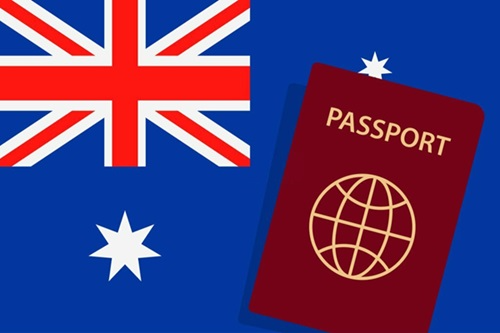
Australia tourist visa for child vs. adult: What’s the difference?
3 Steps to apply for Australia tourist visa for your child:
Prepare your documents
- ● Ensure all the mentioned documents are fully prepared.
- ● Before submitting your Australia child tourist visa application, carefully review all of your documents.
Submit your documents
- ● Before submitting your application for Australia child tourist visa, you need to create an account and schedule an appointment through the VFS Global’s website .
- ● You’ll submit your application at the website of the Australian Consulate or Embassy.
- ● Attend VFS Biometric Appointment at VFS Global headquarters and pay the required visa application fee.
Receive your application result
- ● Track the progress of your visa application online on the official Australian Embassy’s website.
- ● You will be granted an Australia tourist visa for child if your application is approved.
While the general process for obtaining an Australia tourist visa is similar for children and adults, there are some key differences to be considered :
- ● The Australia tourist visa application form includes a section for parents’ or guardians’ personal information. It is important to note that Australian tourist visas for applicants under 18 typically have shorter validity periods than those granted to adults.
- ● Applying for an Australia tourist visa for child typically involves 2 types of forms: Form 1229 and Form 1257. If the child travels with a guardian or one parent, include a completed and signed Form 1229 . Otherwise, include a completed and signed Form 1257 .
Thao & Co. can simplify your Australia tourist visa for child application process by assisting you with form filling and handling your document translations, meeting your specific needs and delivering high-quality translations that empower your visa application.
Let Thao & Co. help you with personalized consultations on certified translation services for Australian tourist visa applications!
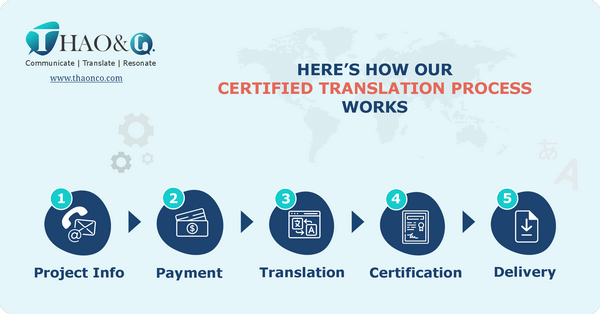
How much does Australia tourist visa for child cost?
The current total expense for an Australia tourist visa for child includes:
- ● Australia visitor visa fee: 190 AUD per person
- ● Biometrics collection: you typically need to pay a service fee depending on how and where you provide your biometrics. Some countries utilize third-party service providers like VFS Global. The fee can vary depending on location.
The requirements vary depending on the type of visa and the timing of the visa application . Additionally, there are some additional fees that may arise during the visa application, including a health examination fee, a certificate, a passport for the child, a fee for submitting supplementary documents (if any), and others.
Tips to prepare an Australian tourist visa application
An Australia tourist visa for a child is typically no harder to get than one for adults. However, securing an Australia tourist visa for a child requires careful preparation of specific documents related to children and their guardians.
These include ID card, documents demonstrating the parents’ legal right to act in the child’s best interest during the trip, financial proof of parents whose child applied for Australia tourist visa, etc.
To apply for an Australia tourist visa for your minors, it is mandatory to obtain approval from parents or guardians and get permission from the local authorities of your permanent residence.
Before submitting your Australia tourist visa application for your child, make sure you keep in mind your timelines and plan well ahead . This helps you avoid unnecessary delays, especially during peak seasons when waiting times can extend to 2-3 days . When applying for a visa, it’s advisable to avoid peak tourist seasons or holiday periods if possible.
To ensure a smooth and hassle-free process, it’s recommended to apply for an Australia tourist visa for the under 18 children at least 1-2 months before the expected entry. This allows you ample time to deal with processing delays and last-minute incidents.
In addition, having all necessary documents translated into English facilitates a smooth review of your application. Having your visa application documents professionally translated into English ensures clear communication with Australian Embassy officers, increasing your chances of approval.
Professional certified translation services
As a leading translation company, Thao & Co. takes pride in our expert Certified and Notarized Translation Services for Australian tourist visa applications. Our translations are performed by seasoned linguists with professional qualifications. We prioritize clear communication and meeting your specific needs to deliver high-quality translations that empower your visa application.

By choosing Thao & Co.’s services, you can expect:
- ● Certified translations for standard documents delivered in just 48 hours .
- ● Expert-backed accuracy, peace of mind guaranteed: Our team of experienced linguists ensures meticulous translations that meet Australia tourist visa for childs requirements, giving you confidence in your application.
- ● Thao & Co.’s Certificate of Translation Accuracy provided free of charge
- ● The highest standards of confidentiality for all project information – your information is only used to process your translation order.
- ● Thao & Co.’s proprietary platform helps you keep track of all project progress.
Choose our services to enjoy all the benefits that come with professional translations. No more visa delays! Thao & Co.’s acclaimed certified translation services ensure your Australia tourist visa application stays on track.
Get a free quote today and see how our professional translations can streamline your application process and boost your confidence for visa success!

Visa Traveler
Exploring the world one country at a time
Australia Visitor Visa: Requirements, Eligibility and Application Process
Updated: February 7, 2024
Australia Visitor Visa is the only option to visit Australia as a tourist for many nationalities. If you don’t qualify for either the Electronic Travel Authority(ETA) or the eVisitor Visa, then you will need to get a Visitor Visa.
Australia no longer accepts paper applications for the visitor visa. All applications must be lodged online through the Australian Government Immi Portal.
The Visitor Visa has subclass 600 in Australia’s visa documentation and the subtype we’re interested in is the “Tourist stream (apply outside Australia)”.
Quick summary:
- Eligibility: All nationalities are eligible
- Validity: Valid for 6 months, 1 year or 3 years with single or multiple entries
- Duration of stay: Generally, 3 months allowed stay, but up to 6 or 12 in some cases
- Visa fee: Visitors visa fee is 190 AUD
- Processing time: 50% of applications are processed in 7 days and 90% in 21 days.
If you haven’t already, read the Australia Visa Guide to familiarize yourself with Australian tourist visa types, requirements, eligibility and entry procedures at the border.
Table of Contents
Understanding australia visitor visa.
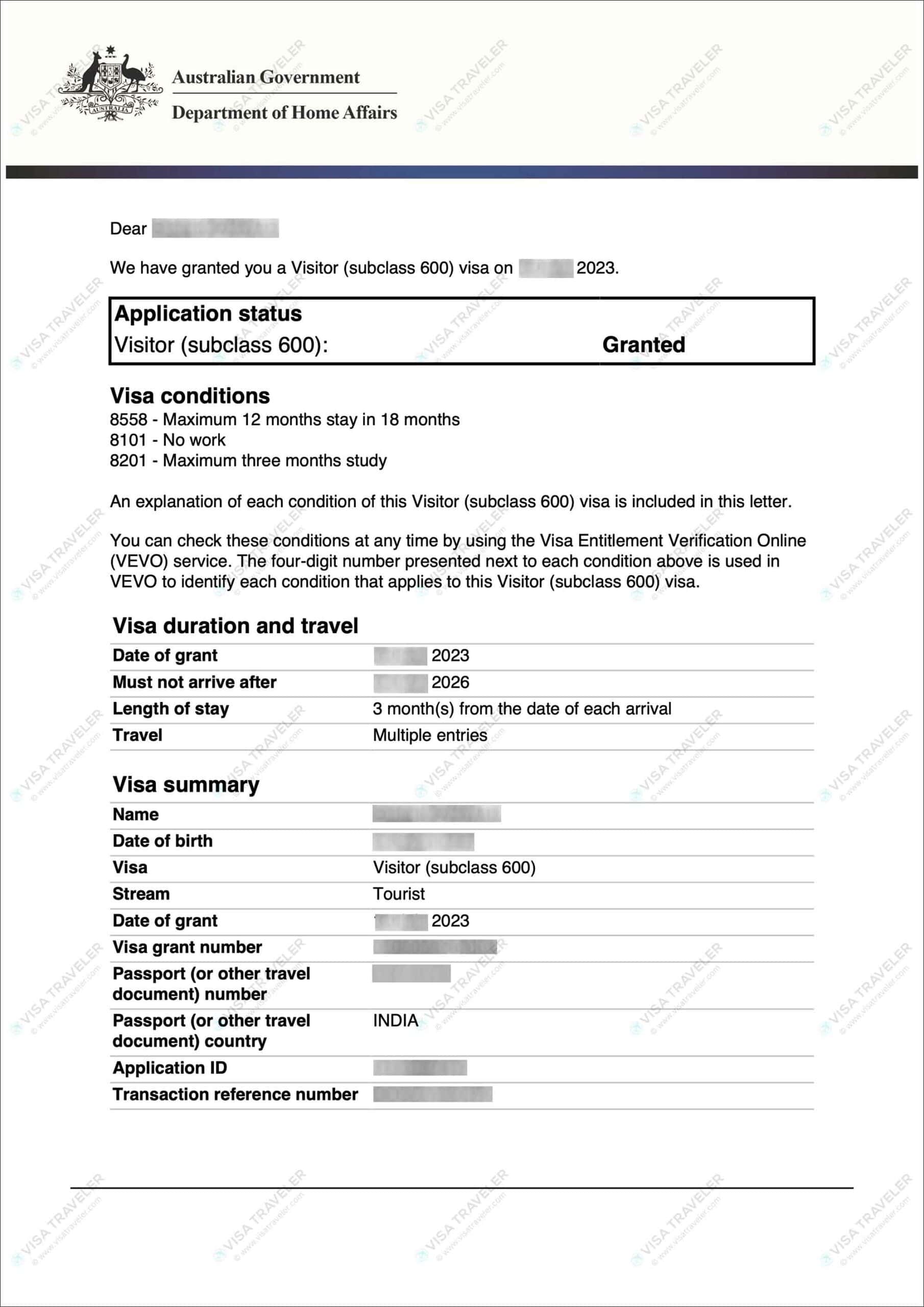
Visitor visa validity
The Australian Visitor visa is valid for 6 months, 1 year or 3 years from the date of issue. The validity of the visa depends on your nationality and circumstances. For example, most Indian passport holders get a 3-year valid Australian visa, whereas Phillippine passport holders get a 1-year valid visa. Pakistan nationals get a 6-month validity.
You must visit Australia within the validity of your visa.
Duration of stay
Most Visitor visas granted allow for 3 months of continuous stay in Australia. Depending on circumstances, you might be granted a stay of 6 months or even 12 months.
Allowed number of entries
Most Visitor visas are multiple-entry , but Home Affairs also issues single visas in certain circumstances for certain nationalities.
When to apply
Since the tourist visas are valid for at least 3 months, it’s a good idea to apply well in advance. Most applications get processed in 3 weeks or fewer.
Visa extension
Australia Visitor visa is non-extendable . If you need to extend your stay in Australia , you are allowed to apply for another Visitor Visa (onshore) from within the country.
Australia Visitor Visa Requirements
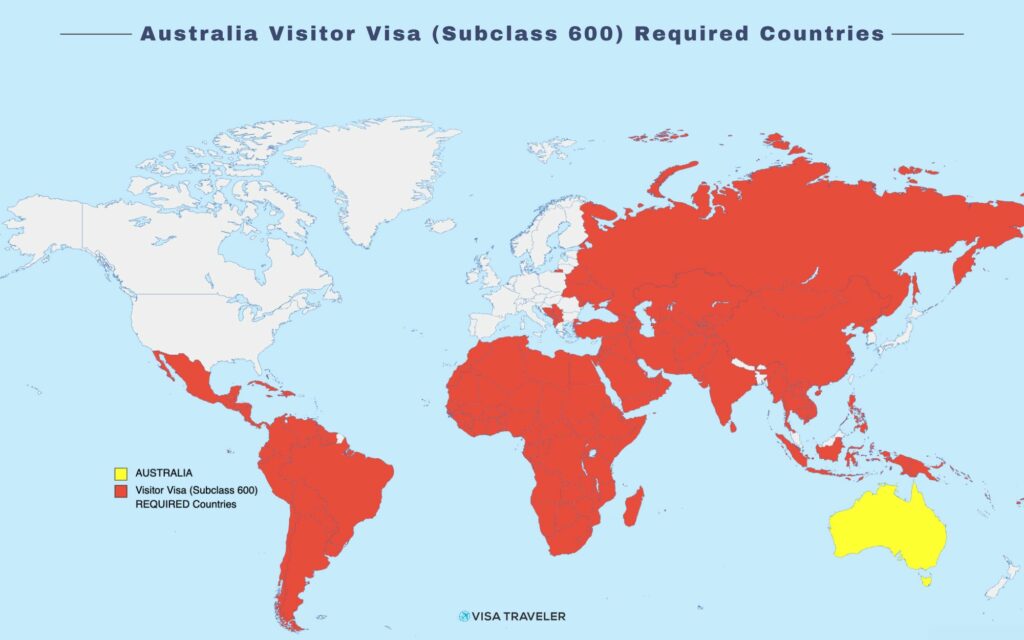
Who requires a Visitor Visa?
Australia Visitor Visa is REQUIRED for all nationalities to enter Australia as a tourist, except for the below.
- New Zealand passport holders
- Electronic Travel Authority (ETA)
- eVisitor Visa
- Those transiting in Australia for less than 72 hours and can get a Transit visa .
Documents required
To support your application, you can attach as many as 60 documents online. You don’t have to attach that many but the more documents you provide, the better your chances of approval.
You have to satisfy the Home Office that:
- You are who you say you are
- You are a genuine visitor who will not overstay or work illegally
- You are of good character and not have a criminal record
- You won’t be a burden to Australia’s healthcare system
To do this, attach as many of these documents as you can :
Identity documents
- Valid passport (must be valid for the duration of the stay)
- Valid National ID card (if from a country that issues them)
- marriage or divorce certificate;
- change of name documents;
- documents that show other names you have been known by
- Residence Permit/Visa (if residence and citizenship differ)
- One passport-size photo
Genuine visitor documents
- Itemized personal bank statements for the last 3 months. Aim to have at least 5000 AUD in your bank account. The money cannot be deposited suddenly and inexplicably – it should be from legitimate sources and savings over time.
- Tax returns
- Credit card statements
- their relationship to you
- the purpose of your visit and length of stay
- if you will be staying with them
- Proof of their funds (if they will be paying for your stay)
- Your plans or travel itinerary while in Australia
- a letter from your employer stating you plan to return to your job
- proof that you study at a school, college or university in your home country
- proof that you have immediate family members in your home country
- proof that you own a house or other major assets in your home country;
- Confirmed return flight ticket;
- Health Insurance
At a later date, you may be required to obtain and submit the following:
- Medical Certificate
- Police Clearance Certificate (PCC)
All non-English documents (except for police certificates) must be translated into English and all documents’ copies (both original and translations) must be certified.
Photo requirements
You need one passport-size digital photo for the Visitor Visa application. The photo must meet the following requirements.
- Taken in the last 6 months
- Showing your head and shoulders against a plain background
- Neutral facial expression with mouth closed, eyes open, and looking at the camera
- Religious head coverings are allowed but must not obscure the face
- Piercing is allowed but must not cause any reflections or shadows
There is no official guidance for the size and resolution of pictures uploaded online but the file type must be JPG. You will get to move the photo to position your face within a frame.
As long as the picture is clear, crisp, and not excessively big, it will be accepted.
Visitor visa fee
The Australian Tourist Visa application fee is 190 AUD , payable online.
You may also have to pay for:
- Health checks
- Police certificates
Processing time
Australian immigration reports that 50% of applications are processed in 7 days and 90% are processed in 21 days . These periods start after you submit your biometrics (if required).
Visitor Visa Application Process
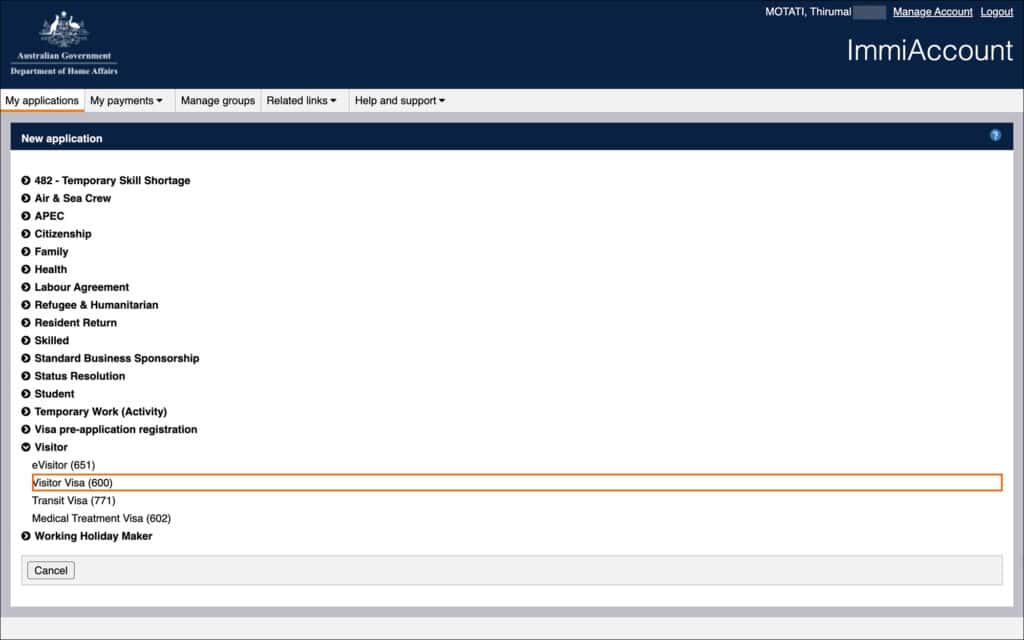
How to apply
You must apply for your tourist visa online through the Immi Portal. Applying on paper is not possible for the visitor visa anymore. Follow the below steps:
- Go to the ImmiAccount portal and create an account
- Click on “New application” and pick “Visitor Visa (600)”.
- Enter your personal information, passport details, employment details and financial information
- Upload your documents such as passport, photo, etc.
- Pay the required visa fee
- Submit the application
The Visitor Visa is part of Australia’s biometrics program. If you apply for a Visitor Visa from any of the below countries, regardless of your nationality, you must give your biometrics.
- Afghanistan
- Bosnia and Herzegovina
- Kazakhstan
- New Zealand
- Papua New Guinea
- Philippines
- Saudi Arabia
- Solomon Islands
- South Africa
- South Korea
- United Arab Emirates
If you apply from one of these countries, you will receive an email informing you that you need to visit an Australian Biometrics Collection Centre (ABCC) to have your biometrics collected. The biometrics are usually a face photo and fingerprint scan.
You must complete the biometrics procedure within 14 days of getting this email otherwise your application becomes void without a refund!
AABCs are typically managed by VFS Global. They charge a service fee for biometric collection. This fee depends on AABC and the country you are applying from.
For example, the biometric service at AABC in Dubai, UAE is AED 109.17. The biometric service fee at AABC in Manila, Philippines is PHP 557.
How to schedule biometric appointment?
Within 24 hours of applying for your Visitor Visa, you will receive an email with a biometric request letter from Home Affairs. Follow these steps to schedule your biometric appointment.
Find the nearest ABCC to you and follow the prompts to schedule your biometric appointment.
How to attend biometric appointment?
Follow the below steps to attend your biometric appointment at an AABC.
- Arrive at the AABC at least 15 minutes before your appointment time
- Original passport
- Biometric appointment confirmation
- Biometric fee receipt and
- Biometric request letter received in the email from Home Affairs
- Your facial photo is taken and your 10 fingertips are scanned
What if you can’t attend your appointment?
If you can’t make an appointment, you can reschedule your appointment up to 24 hours before your scheduled appointment date and time. You can reschedule up to 2 times.
What if you miss your appointment?
If you miss your scheduled appointment, you will lose the fee paid as the biometric fee is nonrefundable. You will also have to wait 24 hours to schedule a new appointment.
How to track status
You will receive the status of your application in your email. You can also track the status of the visa in your ImmiAccount.
How to download approved visa
When your Visitor Visa is approved, you will receive a grant letter in your email from Home Affairs. The grant letter is your Visitor Visa.
The Visitor visa is electronically linked to your passport, so you don’t need to download or print your Visitor Visa.
If you’re ever asked to show any proof, you can use the Grant Notification you received in your email. You can also download it from your ImmiAccount under “Visa Grant Details”.
How to check the validity of your Visitor Visa
The expiration date of your Australia eVisitor visa is indicated as “Must not arrive after” on the visa letter. If you lost your grant letter or don’t have a copy of your Visitor Visa, you can check the validity details on the Visa Entitlement Verification Online (VEVO) portal by using either your Visa Grant Number or Transaction Reference Number.
Customer service
Refer to the Self-help Guidelines for information to troubleshoot any issues. If facing issues with your ImmiAccount or the Visitor visa application, contact customer service using the below webform
Web: ImmiAccount Technical Support Form
Procedure at the border
The Visitor Visa is digitally attached to your passport so you don’t need to print anything. When you enter Australia, simply present your passport and be ready to answer a few basic questions about your visit.
Eligible passport holders can use the Smart Gates for faster arrival and departure procedures.
All visitors including Australian citizens are required to fill out an Incoming Passenger Card on arrival.
Frequently Asked Questions (FAQs)
How long does it take to get an australian tourist visa.
It can take up to 3 weeks to get an Australian tourist visa, especially if submitting your biometrics. It can be faster or slower depending on where you are applying from, your circumstances and the number of documents you submit.

How hard is it to get a tourist visa to Australia?
It is easy to get a tourist visa to Australia if you submit a complete application with as many documents. You must convince the Home Office that you won’t overstay or break the conditions of the visa.
How much bank balance is required for Australia tourist visa?
Australian Home Office doesn’t specify the minimum bank balance required for a tourist visa. Your bank account must show continuous cash flow and not a lump sum deposited recently.
Based on the reports from travelers reports and recommendations from embassies, you should aim for at least 5,000 AUD in your bank account when you apply.
Can you get a 3-year visitor visa to Australia?
Yes, you can get a 3-year visitor visa to Australia if are from an eligible country and meet the requirements. Australian Visitor Visa is issued for 6 months, 1 year or 3 years depending on your nationality and circumstances. For example, Indian nationals can get an Australian tourist visa valid for 3 years.
WRITTEN BY THIRUMAL MOTATI

Thirumal Motati is an expert in tourist visa matters. He has been traveling the world on tourist visas for more than a decade. With his expertise, he has obtained several tourist visas, including the most strenuous ones such as the US, UK, Canada, and Schengen, some of which were granted multiple times. He has also set foot inside US consulates on numerous occasions. Mr. Motati has uncovered the secrets to successful visa applications. His guidance has enabled countless individuals to obtain their visas and fulfill their travel dreams. His statements have been mentioned in publications like Yahoo, BBC, The Hindu, and Travel Zoo.
PLAN YOUR TRAVEL WITH VISA TRAVELER
I highly recommend using these websites to plan your trip. I use these websites myself to apply for my visas, book my flights and hotels and purchase my travel insurance.
01. Apply for your visa
Get a verifiable flight itinerary for your visa application from DummyTicket247 . DummyTicket247 is a flight search engine to search and book flight itineraries for visas instantly. These flight itineraries are guaranteed to be valid for 2 weeks and work for all visa applications.
02. Book your fight
Find the cheapest flight tickets using Skyscanner . Skyscanner includes all budget airlines and you are guaranteed to find the cheapest flight to your destination.
03. Book your hotel
Book your hotel from Booking.com . Booking.com has pretty much every hotel, hostel and guesthouse from every destination.
04. Get your onward ticket
If traveling on a one-way ticket, use BestOnwardTicket to get proof of onward ticket for just $12, valid for 48 hours.
05. Purchase your insurance
Purchase travel medical insurance for your trip from SafetyWing . Insurance from SafetyWing covers COVID-19 and also comes with a visa letter which you can use for your visas.
Need more? Check out my travel resources page for the best websites to plan your trip.
LEGAL DISCLAIMER We are not affiliated with immigration, embassies or governments of any country. The content in this article is for educational and general informational purposes only, and shall not be understood or construed as, visa, immigration or legal advice. Your use of information provided in this article is solely at your own risk and you expressly agree not to rely upon any information contained in this article as a substitute for professional visa or immigration advice. Under no circumstance shall be held liable or responsible for any errors or omissions in this article or for any damage you may suffer in respect to any actions taken or not taken based on any or all of the information in this article. Please refer to our full disclaimer for further information.
AFFILIATE DISCLOSURE This post may contain affiliate links, which means we may receive a commission, at no extra cost to you, if you make a purchase through a link. Please refer to our full disclosure for further information.
MORE VISA GUIDES

UNITED KINGDOM

VIEW ALL VISA GUIDES
- Cookie Policy
- Copyright Notice
- Privacy Policy
- Terms of Use
- Flight Itinerary
- Hotel Reservation
- Travel Insurance
- Onward Ticket
- Testimonials
Search this site
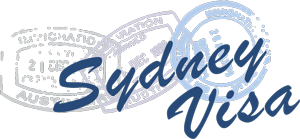
- Head Office: Sydney, Australia
- Email Address: [email protected]

Successful Visa Applications | 20 Years Service
Parent visas.

PARENT VISAS
These visas are for parents, including parents in retirement age who have a child / children in Australia who are a settled Australian citizen, Australian permanent resident or eligible New Zealand citizen (sponsor).
There are different options: Temporary and Permanent parent visas.
- Contributory parent 173
- Contributory Aged Parent 884
- Sponsored Parent 870
- Parent Visa 103
- Aged parent visa 804
- Contributory parent 143
- Contributory Aged Parent 864

Balance of Family Test Requirement
You need to pass the test if you are applying for one of these visas:
103 – Parent
143 – Contributory Parent
173 – Contributory Parent (Temporary)
804 – Aged Parent
864 – Contributory Aged Parent
884 – Contributory Aged Parent (Temporary)
Applicant’s and their partner’s children, including stepchildren and adopted children, are counted in the balance of family test.
Children are not counted if they:
- are deceased
- have been removed from their parents’ exclusive legal custody by adoption, court order or operation of law
- are registered by the United Nations High Commissioner for Refugees (UNHCR) as refugees and live in a camp operated by the UNHCR
- live in a country where they suffer persecution or human rights abuse and can’t be reunited with their parents in another country
A stepchild is:
- your current partner’s child, or
- your former partner’s child who is under 18 years of age and in relation to whom you have guardianship, custody or a parenting order in force under the Family Law Act 1975. Stepchildren born from polygamous or concurrent relationships are not counted in the balance of family test
Eligible children to sponsor parents
A child is an eligible child if they are:
- an Australian citizen, or
- tan Australian permanent resident usually resident in Australia, or
- an eligible New Zealand citizen usually resident in Australia.
Children who are in Australia on a temporary visa are NOT considered as eligible children.
Contributory parent 173 visa (Temporary)
This visa allows you to live, work and study in Australia for up to 2 years . A holder of this visa can enrol in Australia’s public health care scheme, Medicare. You can travel outside Australia and return as many times as you want within two years from the date the visa is granted. This visa leads you to permanent residency – you can apply for a permanent Contributory Parent visa (subclass 143).
You can be in or outside Australia when you apply for the visa. You must be outside Australia when the visa is decided (Covid-19 concession may be applied).
Primary Requirements for applicants:
- Be sponsored
- Meet the balance-of-family test
- Meet health requirements
- Meet character requirements (a police certificate from every country where you spent a total of 12 months or more in the last 10 years since you turned 16)
- Not have already applied for or hold a Sponsored Parent (Temporary) (Subclass 870) visa when applying for this visa
Primary Requirements for sponsors:
- An Australian citizen, Australian permanent resident or eligible New Zealand citizen
- Settled and usually resident in Australia (have lived lawfully in Australia for a reasonable period, usually at least 2 years)
- 18 years old or older
- Must agree to provide accommodation and financial support for sponsored applicants
The Department of Home Affairs fee:
- There is an additional charge for each family member who applies with you
You pay for this visa in 2 parts called instalments.
Applying for this temporary subclass 173 visa before the permanent subclass 143 visa lets you spread the costs of your immigration over a number of years.
Contributory Aged Parent 884 visa (Temporary)
This visa allows you to live, work and study in Australia for up to 2 years. A holder of this visa can enrol in Australia’s public health care scheme, Medicare. You can travel outside Australia and return as many times as you want within two years from the date the visa is granted. This visa leads you to permanent residency – you can apply for a permanent Contributory Aged Parent visa (subclass 864).
You must be in Australia when you apply for this visa and when the visa is decided.
- Be pension age (see below)
- The visa you currently hold when apply must not have a no further stay condition on it
- Must agree to provide support, housing and financial help for the first 2 years the applicant lives in Australia
Applying for this temporary subclass 884 visa before the permanent subclass 864 visa lets you spread the costs of your immigration over a number of years.
Sponsored Parent 870 visa (Temporary)
This temporary visa lets a parent reunite with children, visit Australia for up to 3 or 5 years per visa. You can travel to and from Australia as many times as you want while the visa is valid.
You can re-apply for further Sponsored Parent (Temporary) visas to visit up to a maximum period of 10 years in Australia.
You can NOT work in Australia while you hold this visa.
This visa does not lead to permanent residence.
You must be outside Australia when you apply for this visa, unless you have Permission to Apply in Australia. You can be in or outside Australia when the visa is decided.
- Be the biological, legal (including adoptive) parent, step-parent or parent in-law of the sponsor
- Be at least 18 years of age
- Must have access to sufficient funds to meet the costs and expenses of your intended stay in Australia
- Must intend to stay only temporarily in Australia and do only the things the visa allows you to do
- Must have and maintain adequate arrangements for health insurance from an Australian Health Insurance provider to cover any unforeseen medical treatment you might need while you are in Australia
- Cannot include family members in your visa application
- Be An Australian citizen, Australian permanent resident or eligible New Zealand citizen
- Be settled and usually resident in Australia (have lived lawfully in Australia for a reasonable period, usually at least 4 years)
- If you are sponsoring your Partner’s parents, your Partner must also be an Australian citizen, Australian permanent resident or eligible New Zealand citizen
- Have no debt to the Australian government
- Taxable income must be at least equal to, or greater than AUD 83,455 per year
- Must agree to provide support, housing and financial help while the applicant is in Australia and pay outstanding public health debts incurred by your parent in Australia
- Must apply to become an approved Parent Sponsor
- Visa application:
Up to 3 years – AUD 5,000
Up to 5 years – AUD 10,000
- Sponsorship application – AUD 420
Contributory parent 143 visa (Permanent)
This visa allows you to live, work and study in Australia permanently . A holder of this visa can enrol in Australia’s public health care scheme, Medicare.
You can sponsor your family members to come to Australia.
You can travel to and from Australia as many times as you want for 5 years from the date this visa is granted.
If you want to travel after the initial 5-year travel facility:
- you will need to apply for and be granted a Resident Return (RRV)
- if you become an Australian citizen, you don’t require a visa to enter Australia
Processing times for this visa can be 3-5 years .
You can be in or outside Australia when you apply for the visa.
Primary Requirements for applicants (excluding retiree path):
- Must be able to obtain an assurance of support
- Must not have any debt to the Australian government
- Not have already applied for or hold a Sponsored Parent (Temporary) (Subclass 870) visa when applying for this visa.
- Must agree to provide support, housing and financial help for the first 2 years the applicant lives in Australia.
The Department of Home Affairs fee
Contributory Aged Parent 864 visa (Permanent)
This visa allows you to live, work and study in Australia permanently. A holder of this visa can enrol in Australia’s public health care scheme, Medicare.
Processing times for this visa can be 3-4 years .
You must be in Australia when you apply for this visa.
- Be pension age
Parent Visa 103 (Permanent)
This permanent visa lets a parent immigrate to Australia to be with their children.
This visa allows you to live, work and study in Australia p ermanently. A holder of this visa can enrol in Australia’s public health care scheme, Medicare.
Processing times for this visa can be up to 30 years .
- Have health insurance
- Must not have any debt to the Australian government (you or any family members) or have an approved formal arrangement to pay it back.
Aged parent visa 804 (Permanent)
Processing times for this visa can be up to 15 years .
- Have paid back your debt to the Australian government
Pension Age Requirements
The pension age will be gradually increased from 65 to 67 years as set out in the table below.
Source Link https://www.dss.gov.au/seniors/benefits-payments/age-pension .
Assurance of Support
An assurance of support (Aos) is a legal agreement to help someone get a visa to live in Australia.
AoS is a legally binding and unconditional commitment by an Australian resident (the assurer) to repay certain Australian social security payments that have been paid to migrants (the assurees) during their respective AoS period.
It’s your promise to pay the Australian Government back for any social security payments that were given to the visa applicant.
To get some types of visas you must have an assurance of support. These are any of the following:
- an aged dependent relative visa
- a contributory parent or contributory aged parent visa
- a parent or aged parent visa
- a remaining relative visa.
Australian Parent Visas explained
- 1 300 827 159
- Mon - Fri: 9AM - 5PM

101 Visa – Permanent Child Visa
The child visa (subclass 101) lets a child under 25 years of age who lives outside Australia to stay and live permanently in Australia with their parents. The parent must be an Australian citizen, permanent resident or eligible New Zealand citizen, who has lived in Australia. The parent is eligible to sponsor their child to live in Australia for an indefinite period and the parent can apply for this visa on behalf of a child who is under 25 years of age. You will be eligible for this visa if you have met these requirements.
*Note this is on offshore application, for onshore application please see child visa subclass 802 or if the child is adopted please see Adoption visa subclass 102
Child Visa (Subclass 101) Requirements
- The child must be dependent on their parent who is an Australian citizen, permanent resident or eligible New Zealand.
- Sponsored by a parent or their parent’s partner.
- The child must be under 18 years of age.
- The child between 18 to 25 years of age should be a full-time student to be eligible.
- If the child over 18 years of age is unable to work due to a disability.
- Be single and dependent on the parent.
- Meet health and character requirements.
Child Visa (Subclass 101) Application Process
When you apply for this visa, the child should be outside Australia when the application is submitted and at the time of the grant.
If the child has siblings who also want to apply for this visa, they must be submitted as a separate application for each sibling.
Usually, the application is lodged by the sponsor on behalf of the child.
The sponsor should provide accurate documents and information.
Another condition of this visa is that the child can’t enter Australia before the visa is granted and ensure that they are not getting married or entering into a de facto relationship before arriving in Australia.
Once the child visa is granted the sponsor must provide support for the child, including accommodation and financial support during the first two years following the grant of the child’s visa.
The sponsor also must support the child to attend any required English language class and should help the child to settle in Australia.
Child Visa Subclass 101 Processing Time 202 3
- As of July 2023, the processing time for a Child visa (subclass 101) is between 6 months and 24 months.
- But it might take longer to process if you don’t fill in the application correctly or you don’t include all the documents that are needed, that’s why it’s important to know all the information before you apply for this visa.
- The application also can’t be processed if the applicant doesn’t pay the visa charge correctly.
Child Visa Subclass 101 Cost 202 3
As of July 1st 2023, the visa charge is AUD 3,055 for the main applicant, but there is also a charge for each dependent child who applies for this visa.
The additional applicant charge for 18 years of age and over is AUD 1,530 and the applicant charge for under 18 years of age is AUD 765.
There might be additional charges for health exams, police certificates, and biometrics.
What You Can Do As An 101 Visa Holder
If the Child visa is granted, the child will automatically become a permanent resident in Australia on the day of the visa grant.
The child and any dependent must obey the Australian laws and this visa allows the child to:
- Stay in Australia indefinitely.
- After a certain time, the child might be eligible for Australian citizenship.
- Can work and study in Australia from the date of the visa grant.
- Enroll in Australia’s public healthcare scheme, Medicare.
- Sponsor relatives to come to Australia.
- The child can travel to and from Australia as many times as they want for 5 years from the date of visa grant.
The child visa is valid for 5 years and you should extend this visa through applying for a Resident Return Visa (RRV) before the visa’s travel facility expires, in order for the child to be able to live in Australia as a permanent resident.
Frequently Asked Questions For Child Subclass 101 Visa
ONE derland Consulting managing director and also registered migration agent, Indah Melindasari, B.Com ( MARN 0961 448 ) is here to answer your questions!
- You may be sponsor your step child if the child is under the age of 18 years old and you are no longer the partner of the child’s parent, but you have legal responsibility for the child.
- For the adopted child, you can sponsor your adopted child if you adopted them before you became an Australian citizen or the holder of an Australian permanent visa.
- The child must not be in full-time work and should be a full-time student when applying for a Child visa.
- The child has started the course since turning 18 years of age or within six months or a reasonable time after finishing school.
- You may take DNA testing as evidence to show that you are the biological parent of your child or you may provide any other documents that are related to this, for example a birth certificate that shows both parent’s names.
- If your child is under the age of 18, the sponsor or a parent may apply for their child on their behalf.
- If your child is under than 18 years of age, you have written consent of each person who can legally decide where the child lives, or the laws of the child’s home country that permits your child’s departure.
- Furthermore, this needs to be consistent with any Australian child order.
- The child doesn’t need to take the medical test before applying for this visa. The child can take a medical test if the Department of Immigrations is asking you to provide this document.
- 25 years of age is the limit for a child visa. If the child is over 18 years of age, the child needs to be a full time student and to prove the financial dependency to the eligible parent.
- The child’s dependent children can be included on the application when the child apply or at any time before the Department of Immigration decide the application.
- Dependent children of the child who apply for this visa must meet the health requirement.
- The visa application should be made offshore. The child should be outside Australia when applying for this visa and when the Department gives the decision.
- The visa fee for the main applicant is AUD 3,055 while the additional applicant under 18 years old is AUD 765, and AUD 1,530 for the additional applicant over 18 years old.
Obtaining 101 Visa in Simple Five Steps
First step: check your eligibility.
The first thing you need to do before starting the application for a Child visa subclass 101 is checking the child’s eligibility. The child should meet all the criteria and requirements for this visa.
Second step: Gather all the required documents
If the child has met all the criteria, you have to make sure the child’s passport is valid. You also can start to gather all the required documents in support of the visa application on behalf of your child.
You should provide accurate documents and information to avoid misleading information.
Third step: Apply for the Child visa
Once you have gathered all the required documents, you can start the application on behalf of your child.
As per July 2023, the application for Child Visa (subclass 101) is done through a paper-based application.
It means you need to send all required documents by postage to the Child Visa Processing Centre in Western Australia.
Fourth step: After you lodge the Child visa application
When you have lodged the application, you can upload the documents on a regular basis.
You need to monitor your application as Immigration might request further information and documentation from you.
Fifth Step: Grant permanent Child visa subclass 101
After your application has got a place for assessment, the department will assess your application for the second stage.
In this stage, they will continue assessing your application and ask you to finalize the payment. Be aware that it is suggested that you not move to Australia until after your visa is granted
Quick Links Related to 101 Visa
Parent Visa 143
Parent Visa 173
Remaining Relative Visa
Child Visa 101
Parent Visa 884
Parent Visa 870
Adoption Visa 102
Child Visa 802
Share This Information, Choose Your Platform!
Let us help you with your permanent child visa subclass 101 application.
We’ve help family around the world providing high quality document work for their family member visa application.
Never risk your precious relationship with your family. Let ONEderland Consulting, the best Family Visa expert in Perth handle your case.
Contact us through the form on the side to take the first step of bringing your family to Australia.
“Massive thanks to all the team specially Indah and Jamie. My visa conditions was very complicated but they did a great job. Definitely one of the best.”
Maria Helen De Guzman
Bridging Visa E

Indah Melindasari, B.Com
Lead Migration Agent – MARN 0961 448
1300 827 159
By submitting my data I agree to be contacted.

Code of Conduct | Privacy Policy
Copyright © 2010 - 2024 ONEderland Consulting | All Rights Reserved.

- Consultation Policy
- Complaints Policy
- Privacy Policy
- Parent Visas
- Partner Visas
- Child Visas
- Skilled Independent Visa (Subclass 189)
- Skilled Nominated Visa (Subclass 190)
- Skilled Work Regional Visa (Subclass 491)
- Temporary Skill Shortage Visa (Subclass 482)
- Employer Nominated Visa (Subclass 186)
- Skilled Employer Sponsored Regional Visa (Subclass 494)
- Student Visa (Subclass 500)
- Temporary Graduate Visa (Subclass 485)
- Recognised Graduate Visa (Subclass 476)
- Training Visa (Subclass 407)
- Temporary Activity Visa (Subclass 408)
- Business Innovation and Investment Visa (Subclass 188)
- Business Innovation and Investment Permanent visa (Subclass 888)
- E-Visitor Visa (Subclass 651)
- Visitor Visa (Subclass 600)
- Working Holiday Visa (Subclass 417)
- Work and Holiday Visa (Subclass 462)
- Refusal/Cancellation Merits Review (AAT)
- Request for Further Information – RFI (DoHA)
- Ministerial Intervention
- Skills Assessment
- Relationship Statement Guide for Partner Visa
- Relationship Statement Package Order Now
- How to write a Relationship statement guide for your Partner Visa
- Relationship Statement Guide Order Now
- How to apply for an Australian Visa?
- English Language Requirement
- How to find a job in Australia?
- SkillSelect – From EOI to Invitation
- How to Write an Australian Resume?
- Visa Assessment vs. Visa Consultation
- General Migration
- Family Migration Visas
- Skilled Migration Visas
- Employer Sponsored Visas
- Student and Graduate Visas FAQ
- Training & Temporary Activities Visas
- Business Visas
- Visitor and Working Holiday Visas
- Testimonials
If you are seeking assistance in this visa category, Discuss your Case with us today.

Child Visa Categories
- A child visa for a dependent child of an Australian sponsor
- An adoption visa for a child adopted outside Australia by an Australian sponsor
- An orphan relative visa for a child who is under 18 years of age at the time of application and who cannot be cared for by either parent
Orphan Relative Category (Subclass 117, 837)
For children or stepchildren overseas under 18 years of age who have a parent who is an Australian citizen or Australian permanent resident or eligible New Zealand citizen to care for them.
Adoption Category (Subclass 102)
For children under 18 years of age who have been adopted or are in the process of being adopted by their sponsor.
The adoption must be supported by a state or territory adoption authority unless the adoptive parent has been resident overseas for a period of at least 12 months at the time of the migration application, and they can demonstrate their residence overseas was not contrived to deliberately bypass the requirements concerning entry of adopted children.
Dependent Child (Temporary) (Subclass 445)

Subclass 101 Visa is for offshore children from overseas when the application is made.
Child (Permanent) visa (Subclass 802)
Subclass 802 Visa is for onshore children from overseas when the application is made.
Different visas allow applications to be made while child is either onshore or offshore. We can assist you in choosing suitable visa for your situation, Contact Us . Common eligibility for all Child Visa applications
To successfully apply for a child visa, the child:
- Must be single
- Must be younger than 18 years old, or a full-time student aged 18 to 25, or over 18 and unable to work due to a disability
- Financially dependent on their parent
- Meet health and character requirement
Please note that visa specific criteria will also apply depending upon the option chosen.
BOOK CONSULTATION ONLINE
- Popular Searches
- Hide Popular Searches
- migration agent sydney
- employer sponsored pr (visa)
- 186 visa australia
- temporary skills shortage visa
- 494 visa australia
- parent visa australia
- partner visa australia
- skilled migration australia
- 189 visa australia
- skilled nominated visa subclass 190
- 491 visa australia
- migration specialist sydney

Australian Tourist Visa Applications For Kids
Do you need a tourist visa for a Filipino child who will travel with your Filipina sweetheart to Australia? How can this be done? SHOULD this be done?
Down Under Visa explain some of the complexities of organising for a child from the Philippines to get an Australian tourist visa to accompany his mother, ie. a Filipina lady who will visit her Australian fiancee, boyfriend or husband also on a visitor visa.
http://www.downundervisa.com.au/2016/08/02/australian-tourist-visa-applications-kids/
#downundervisa #filipinawives #australianfilipina #australianvisa #partnervisa
We’re not talking about tourist visas for solitary kids, of course. This is kids of Filipina ladies who bring them along so they can be with their future stepfathers, assuming all goes ahead toward a partner visa application later.
australian visa applications for kids may or may not be a good idea in Australian Filipina relationships
Wonderful kid, no doubt. But can make romance for mum and dad challenging.
Tourist visas for Filipino children – practical considerations
To bring the kids, or not to bring the kids?
Again, probably most don’t bring the kids. And whilst I’m a firm PERSONAL believer in kids being included in partner visa applications and not left behind, I have a bit of a different view generally when it comes to tourist visa applications. My view is that unless the relationship is mature enough and you’ve spent enough time with mum AND kids that you have a comfortable relationship anyway, you should consider leaving the kids at home for at least the first visit.
Because a first visit to Australia for a girl from the Philippines IS a big deal, and the purpose of it is to see if you’re comfortable enough together to take the relationship further and to make it permanent. For many women this will be their first trip outside the Philippines, and maybe the first time they’ve been away from their families and the home town even. They’ll be spending 3 months in an Aussie brick-veneer house out in the Australian suburbs somewhere with an Aussie man that they probably have a still-young relationship with. There will be culture-shock issues……homesickness….and the usual relationship teething-problems. Kids…..unless they are candidates for sainthood…..tend to be a demanding lot!
So the issue is you have a Filipina lady there, with her child. Mum has culture/relationship-shock, and child has usual kid-needs. She can’t tend effectively to both her relationship and needy child at the same time. One or both will most likely miss out. Not so easy to have romantic evenings and time spent gazing at each other if there’s a three-year-old tugging at Mummy’s shirt and wanting a drink. Sure doesn’t add to the romance of the whole thing!
Again, if you have spent enough time together and have concentrated already on developing bonds of a new family, then maybe none of this is an issue at all. But if not the case, maybe better to leave Junior with granny this time!
Australian Tourist Visa Applications For Kids | Realted Posts

Australian tourist visa applications for kids

by Jeff Harvie | Aug 2, 2016 | Tourist Visas | 0 comments
Here at Down Under Visa we prepare and lodge a lot of tourist visa applications. Most of the time these are applications for single solitary Filipina ladies who are in romantic relationships with Australian men. Tourist visa applications for kids are less common, but we still invariably lodge them every month.
We’re not talking about tourist visas for solitary kids, of course. This is kids of Filipina ladies who bring them along so they can be with their future stepfathers, assuming all goes ahead toward a partner visa application later.

Wonderful kid, no doubt. But can make romance for mum and dad challenging.
Tourist visas for Filipino children – practical considerations
To bring the kids, or not to bring the kids?
Again, probably most don’t bring the kids. And whilst I’m a firm PERSONAL believer in kids being included in partner visa applications and not left behind, I have a bit of a different view generally when it comes to tourist visa applications. My view is that unless the relationship is mature enough and you’ve spent enough time with mum AND kids that you have a comfortable relationship anyway, you should consider leaving the kids at home for at least the first visit.
Because a first visit to Australia for a girl from the Philippines IS a big deal , and the purpose of it is to see if you’re comfortable enough together to take the relationship further and to make it permanent. For many women this will be their first trip outside the Philippines, and maybe the first time they’ve been away from their families and the home town even. They’ll be spending 3 months in an Aussie brick-veneer house out in the Australian suburbs somewhere with an Aussie man that they probably have a still-young relationship with. There will be culture-shock issues……homesickness….and the usual relationship teething-problems. Kids …..unless they are candidates for sainthood….. tend to be a demanding lot!
So the issue is you have a Filipina lady there, with her child. Mum has culture/relationship-shock, and child has usual kid-needs. She can’t tend effectively to both her relationship and needy child at the same time. One or both will most likely miss out. Not so easy to have romantic evenings and time spent gazing at each other if there’s a three-year-old tugging at Mummy’s shirt and wanting a drink. Sure doesn’t add to the romance of the whole thing!
Again, if you have spent enough time together and have concentrated already on developing bonds of a new family, then maybe none of this is an issue at all. But if not the case, maybe better to leave Junior with granny this time!
The other issue is that the child may only attend school in Australia for three months maximum. And even if you get a stay longer than 3 months (by getting a 6 month visa grant, or by applying for a further stay inside Australia, or if you have a multiple-entry tourist visa), the child may only attend an Australian school for 3 months maximum . So they may miss out on schooling. The other thing is that this may cause a problem with the child’s schooling back in the Philippines. The Filipino education system is not known for its flexibility.
Can I bring the child to Australia in the first place?
OK, so you’ve decided that it’s a good idea to bring the whole family, and of course that’s fine with us. Will there be anything stopping you from getting a tourist visa for the child or children?
Firstly, note that kids go onto separate visa applications. We charge less for kids’ tourist visas than we do for adult visas, because even though they are separate applications they can see the connection between mum’s visa application and Junior’s application. So less work for us. But they are still processed separately, so we don’t do them for free.
Main issue is that you have legal permission to bring the child with you, ie. legal custody. If the mother is a single mother, ie. never married to the biological father of the child, then she has sole legal custody under Philippines law. If she’s widowed, obviously no permission needed. If she is or was married? The father of the child will normally have custodial rights, unless the court specifically took those rights away from him which doesn’t happen very often.
So if there is a custodial father of the child, his permission is needed. If not? Then proof is needed. We can explain all of this to you at the time you ask for us to help you.
And note that an application for a child may well take longer than mum’s visa application, as they need to be 100% certain that all is OK. The safety and protection of children is paramount, so be prepared to wait for them to do their checks and follow-ups.
Questions: Please search our BLOG menu or Visa Knowledge Base
Submit a Comment NOTE: Please restrict your comments to what's written on this page. PLEASE NOTE: You may comment on posts, and you may ask general questions about the visa topic. However requests for “how-to?” information on how to lodge visas or how to deal with specific problems will not be answered. Please engage the services of a professional Registered Migration Agent for actual assistance or advice. Thank you. Cancel reply
Your email address will not be published. Required fields are marked *
Receive news updates via email from this site
Questions about visa types we don’t handle, or about countries we don’t apply for visas from, will not be answered, Philippines to Australia visas for couples and families only.
Do you have suggestions for topics you would like to read an article about? Click HERE and we will see what we can do!
- Down Under Visa - Home
- GETTING STARTED
- WHICH VISAS?
- News and Social Media
- Happy Couples (Testimonials)
- Jeff's Favorite Links
- Filipinas Page
- Can we help you? FREE assessment!
- Partner Visa: The Journey (Philippines to Australia)
How does it work?

Search Our Site
Podcast episodes.

HINT! Listen in the car...or the bus, or on the train.
Happy Couples
SUCCESS STORIES!
Google Reviews
See All Reviews
Facebook Reviews
Subscribe to our BLOG
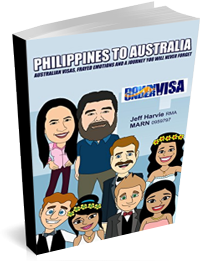
Want the latest in Australian Visa information?
SUBSCRIBE to the Down Under Visa BLOG Page
Never miss a single important update!
BONUS EBOOK! “Philippines to Australia – Australian Visas, Frayed Emotions and a Journey You Will Never Forget” by Jeff Harvie RMA
Just want to buy the book? Purchase directly from Amazon by clicking HERE
We never share or sell your data
Migration Law
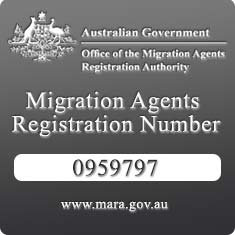
Should you use a Registered Migration Agent or not?
MARA CODE OF CONDUCT
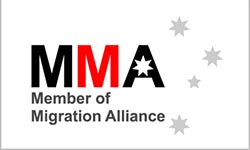
Latest Posts

Useful Links

PHILIPPINES OFFICE
AUSTRALIA OFFICE
IMPORTANT INFORMATION
BY APPOINTMENT ONLY
NOTE: Jeff Harvie and main administrative staff are mostly in the Philippines office. Please do not (a) send documents or (b) attend the AUSTRALIAN office looking for assistance without a previous appointment.
CLICK HERE TO SCHEDULE AN OFFICE APPOINTMENT IN THE PHILIPPINES
Privacy Policy | Partner Program
Copyright © 2024 Down Under Visa Co. All rights reserved.
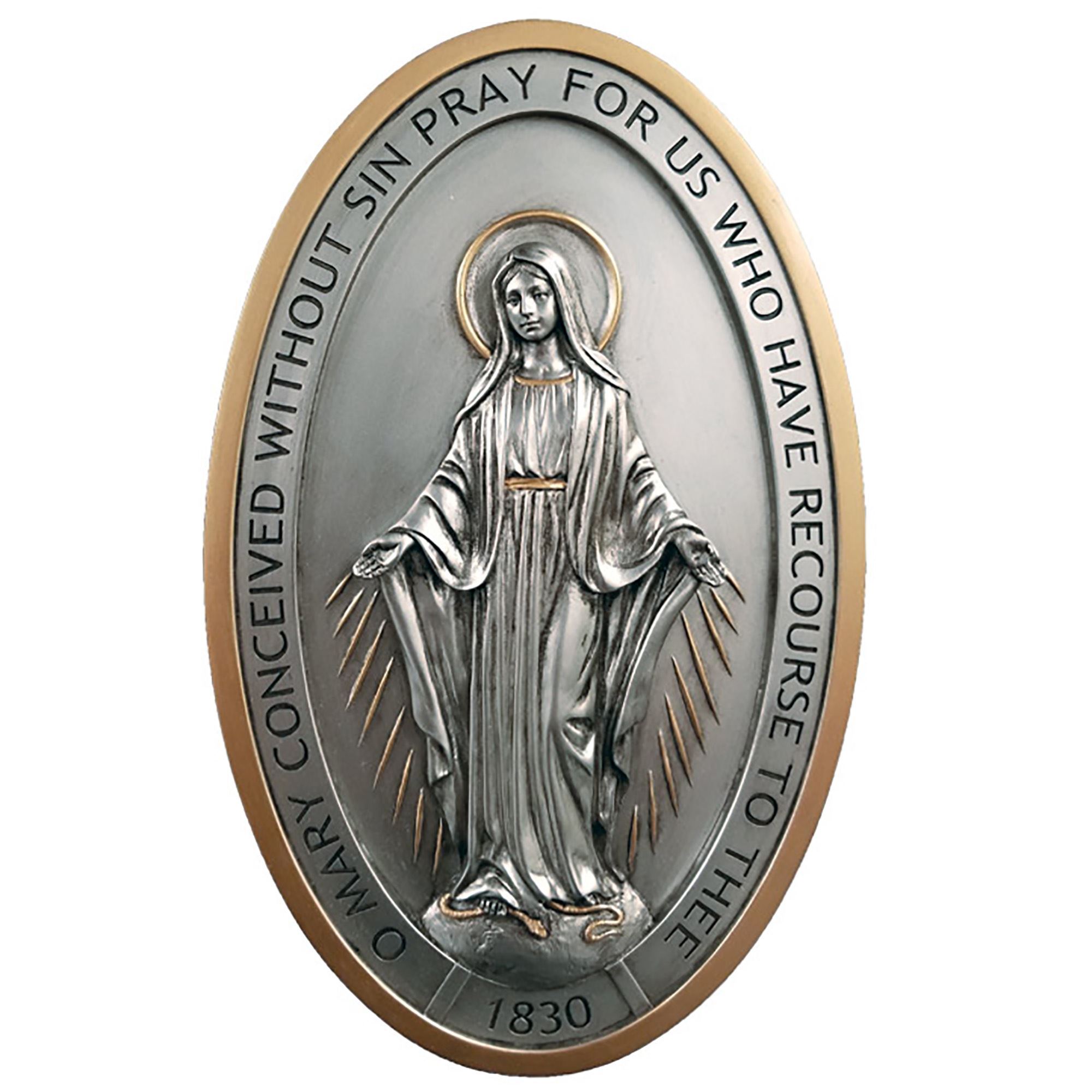
Predators aren't waiting to eat you in Tasmania: 7 things travelers should know
- Tasmania is an island off the southern coast of Australia.
- The island is known for its pristine wilderness, rugged coastlines and captivating wildlife.
- American travelers will find themselves instantly at ease in Tasmania, but don't be fooled – the island's allure lies in its ability to surprise and inspire with breathtaking sights.
The U.S. is teeming with beautiful landscapes, but there's something to be said about experiencing the power of nature halfway across the world.
Embarking on a journey to Tasmania, Australia, is like stepping into a realm where the familiar meets the extraordinary. For first-time visitors looking to start ticking bucket list destinations, Tasmania offers a unique blend of comfort and adventure – with a welcoming g'day. Nestled off the southern coast of the mainland, Tasmania boasts pristine wilderness, rugged coastlines and captivating wildlife.
Move over Hawaii, The Azores Islands also bring vibrant beauty (with fewer crowds)
With English as the primary language and a culture of warmth and hospitality, American travelers will find themselves instantly at ease. But don't be fooled, the island's allure lies in its breathtaking sights.
From exploring ancient rainforests to indulging in culinary surprises, Tasmania promises an unforgettable escape. I visited the island for the first time in May, the start of Australia's winter, and my jaw was on the floor most of the time there. Here's what you need to know before planning your own trip to Tassie.
1. The flights are exactly what you'd expect
There are no direct flights from the U.S. to Tasmania. You'll have to connect through Sydney or Melbourne to Launceston or Hobart. I went from Washington, D.C., to San Francisco to Melbourne to Launceston. It was terrible, I'm not going to lie. Next time I go, I'll spend a day on the West Coast before taking the U.S.-Australia 14-hour flight.
My recommendation is to take a red-eye flight to Australia and use it to sleep and switch over time zones.
Flight availability from the U.S. to Melbourne and Sydney (to transfer to Tasmania) is plentiful, with several major airlines offering regular routes. Travelers can choose from direct flights departing from major U.S. cities like Los Angeles, San Francisco, Houston, Dallas and even New York (with direct service to Auckland). Airlines such as United, American, Delta, Hawaiian, Qantas and Air New Zealand provide nonstop services.
(New direct service from Dallas to Brisbane via American Airlines is expected to launch in October, and from Los Angeles to Brisbane via Delta in December.)
How to visit Australia without flying: Holland America launches new Grand Voyage
2. Americans need a visa to enter the country
American travelers should be aware of the visa requirements before heading down under.
U.S. citizens need an Electronic Travel Authority (ETA) or an eVisitor visa, which can be easily obtained online before departure.
The process is straightforward, typically requiring basic personal information and a valid passport. Once approved, the visa allows for multiple entries into Australia for up to 90 days at a time over a 12-month period. I downloaded the Australian ETA app ( iOS and Android ), filled out a quick application, and my visa was granted in less than an hour.
3. Don't fret about the time zone difference
There's a 14-hour time difference from the U.S. East Coast. It sounds complicated but just embrace it.
The unique advantage of Tasmania’s 14-hour time difference is that you can truly disconnect and savor your vacation. The time zones down under can offer the perfect balance of relaxation and connectivity. Travelers can immerse themselves in the serene landscapes and vibrant culture during the day while still having a few hours in the morning and evening to connect with loved ones back home. It’s the ideal scenario for those seeking to unwind without completely losing touch.
4. Connection with nature
Travelers can immerse themselves in Tasmania's breathtaking nature through a variety of experiences.
At Cradle Mountain in Lake St. Clair National Park, visitors can hike rugged trails and take in stunning alpine views. If you visit at night, you can enjoy a view of cute wildlife with McDermotts Coaches .
But it's OK if you don't enjoy hiking. For a unique adventure, truffle hunting with The Truffle Farm in Deloraine offers another way to explore the island's culinary practices. Wine enthusiasts can savor the flavors of Tasmania at the Clover Hill winery in Lebrina, known for its exquisite sparkling wines and picturesque vineyards.
Whether it's trekking through pristine landscapes, foraging for gourmet treats, or indulging in fine wines, Tasmania offers something for every nature lover.
5. Nothing is likely to kill you
We've all seen social media videos of Australians battling snakes or large spiders, but you can relax.
Fear of wildlife often looms large for travelers, but Tasmania is free of large predators, making it a haven for nature enthusiasts. Here, you can explore lush forests and pristine coastlines without the fear of being eaten.
Tasmania’s unique ecosystem is home to creatures like Tasmanian devils (which are incredibly rare to spot – I also didn't), puggles, platypuses, pademelons, wombats and wallabies, ensuring a safe and enriching experience for all visitors.
There are three kinds of snakes in Tasmania and while two of them can be dangerous to humans, it is extremely rare to encounter them, according to Tourism Australia.
6. The food scene has something for everyone
You will not go hungry in Tasmania. Far from it.
Tasmania's food scene is a vibrant tapestry of flavors, reflecting the island's culinary influences. From fresh seafood caught in pristine waters to farm-to-table produce, there's something for every palate. Influences from British, Mediterranean, and Asian cuisines converge, creating a unique gastronomic experience. Visitors can savor everything from gourmet dining in Hobart’s top restaurants to artisanal cheese and local wine in countryside eateries.
The coffee scene deserves a special mention. The great people of Melbourne will claim they have the best coffee in the world, but Tasmania is right there with them.
Make a stop at Tatler Lane by Sweetbrew in Launceston for a perfect cup, delicious food and a great ambiance.
7. Easy access to a different side of the world
Once in Australia, travelers can take advantage of affordable flights to explore the continent and beyond.
Budget airlines offer frequent, low-cost flights to other Australian cities. This opens up opportunities for reasonably priced trips to exciting neighboring destinations such as Bali, Japan, Fiji or New Zealand. These nearby countries are just a few hours away by plane, so you can expand your adventure without breaking the bank.
Embrace the chance to explore more of the Asia-Pacific region with convenient and cost-effective travel options.
The reporter on this story received access to this event from Tourism Australia. USA TODAY maintains editorial control of content.
The Key Points at the top of this article were created with the assistance of Artificial Intelligence (AI) and reviewed by a journalist before publication. No other parts of the article were generated using AI. Learn more .

An official website of the United States government
Here’s how you know
Official websites use .gov A .gov website belongs to an official government organization in the United States.
Secure .gov websites use HTTPS A lock ( Lock A locked padlock ) or https:// means you’ve safely connected to the .gov website. Share sensitive information only on official, secure websites.
- Fact Sheets
Fact Sheet: Presidential Proclamation to Suspend and Limit Entry and Joint DHS-DOJ Interim Final Rule to Restrict Asylum During High Encounters at the Southern Border
Today, the Biden-Harris Administration took decisive new action to strengthen border security, announcing a series of measures that restrict asylum eligibility, and significantly increase the consequences for those who enter without authorization across the southern border. These extraordinary steps, which will be in effect during times when high levels of encounters exceed our ability to deliver timely consequences, will make noncitizens who enter across the southern border ineligible for asylum with certain exceptions, raise the standard that is used to screen for certain protection claims, and speed up our ability to quickly remove those who do not qualify for protection.
These actions follow a series of steps that the Administration has taken over the past three years as it prepared for the end of the Title 42 public health Order, and since it was lifted last year, including surging personnel, infrastructure, and technology to the border, issuing the Circumvention of Lawful Pathways Rule, and referring record numbers of noncitizens into expedited removal. Over the past year, we have removed or returned more than three quarters of a million people, more than in any fiscal year since 2010. Despite these efforts, our outdated and broken immigration and asylum system, coupled with a lack of sufficient funding, make it impossible to quickly impose consequences on all noncitizens who cross irregularly and without a legal basis to remain in the United States.
The Administration has repeatedly called on Congress to provide the resources and legal authorities needed to secure our border. The measures announced today will better enable the Department to quickly remove individuals without a legal basis to remain in the United States, strengthening enforcement and change the calculus for those considering crossing our border irregularly. However, they are no substitute for Congressional action. We continue to call on Congress to provide the new tools and resources we have asked for to support the men and women on the frontlines.
President Biden issued a Presidential Proclamation to temporarily suspend the entry of noncitizens across the southern border. The Secretary of Homeland Security and the Attorney General also jointly issued an interim final rule that, consistent with the Proclamation, generally restricts asylum eligibility for those who irregularly enter across the southern border – including the Southwest land and the southern coastal borders. The rule also limits fear screenings to those who manifest a fear or express a desire to file for protection and heightens the screening standard for statutory withholding and claims under the Convention Against Torture. Taken together, these measures will significantly increase the speed and scope of consequences for those who cross our borders irregularly or who attempt to present themselves at Ports of Entry without authorization, allowing the Departments to more quickly remove individuals who do not establish a legal basis to remain in the United States. The restriction on asylum eligibility will be discontinued when encounters fall below certain levels but will come back into effect if encounters rise again.
The rule makes three key changes to current processing under Title 8 immigration authorities during periods of high border encounters:
- First, noncitizens who cross the southern border unlawfully or without authorization will generally be ineligible for asylum, absent exceptionally compelling circumstances and unless they are excepted by the Proclamation.
- Second, noncitizens who cross the southern border and are processed for expedited removal while the limitation is in effect will only be referred for a credible fear screening with an Asylum Officer if they manifest or express a fear of return to their country or country of removal, a fear of persecution or torture, or an intention to apply for asylum.
- Third, the U.S. will continue to adhere to its international obligations and commitments by screening individuals who manifest a fear as noted above and do not qualify for an exception to the Rule for withholding of removal and Convention Against Torture protections at a reasonable probability of persecution or torture standard – a new, substantially higher standard than is currently applied under the Circumvention of Lawful Pathways rule.
Like the Proclamation, the rule provides for an end to these enhanced measures following a sustained reduction in southern border encounters. Specifically, these measures are in effect until 14 calendar days after there has been a 7-consecutive-calendar-day average of less than 1,500 encounters between the ports of entry. The measures would again go into effect, or continue, as appropriate, when there has been a 7-consecutive-calendar-day average of 2,500 encounters or more.
During periods of high encounters, the Proclamation will apply across the southern border. Lawful permanent residents, unaccompanied children, victims of a severe form of trafficking, and other noncitizens with a valid visa or other lawful permission to enter the United States are excepted from the Proclamation.
In addition, the suspension and limitation on entry and rule will not apply to noncitizens who use a Secretary-approved process—such as the CBP One mobile app—to enter the United States at a port of entry in a safe and orderly manner or pursue another lawful pathway.
Noncitizens who cross the southern border and who are not excepted from the Proclamation will be ineligible for asylum unless exceptionally compelling circumstances exist, including if the noncitizen demonstrates that they or a member of their family with whom they are traveling:
- faced an acute medical emergency;
- faced an imminent and extreme threat to life or safety, such as an imminent threat of rape, kidnapping, torture, or murder; or
- satisfied the definition of “victim of a severe form of trafficking in persons” currently provided in 8 CFR 214.11.
Consequences
Noncitizens who are subject to the rule’s limitation on asylum eligibility and who manifest or express a fear of return to their country or country of removal, express a fear of persecution or torture or an intention to apply for asylum, but do not establish a reasonable probability of persecution or torture in the country of removal will be promptly removed.
Those ordered removed will be subject to at least a five-year bar to reentry and potential criminal prosecution.
The Proclamation and rule will significantly enhance the security of our border by increasing the Departments’ ability to impose swift consequences for individuals who cross the southern border irregularly and do not establish a legal basis to remain in the United States. Together, the Proclamation and rule make critical changes to how the Departments operate during times when encounters are at historically high levels—levels that, in the absence of these changes, undermine the government’s ability to process individuals through the expedited removal process. These changes will enable the Departments to quickly return those without a lawful basis to stay in the United States and thereby free up the asylum system for those with legitimate claims.
These extraordinary measures are a stop gap. Even with these measures in place, the Departments continue to lack the authorities and resources needed to adequately support the men and women on the frontlines. The Administration again calls on Congress to take up and pass the bipartisan reforms proposed in the Senate, which provide the new authorities, personnel, and resources that are needed to address the historic global migration that is impacting countries throughout the world, including our own. Until Congress does its part, we will continue to take any actions needed under current law and within existing resources to secure the border.
- Border Security
- Immigration
- Biden-Harris Administration
- Department of Homeland Security (DHS)
- Department of Justice (DOJ)
Mobile Menu Overlay
The White House 1600 Pennsylvania Ave NW Washington, DC 20500
FACT SHEET: President Biden Announces New Actions to Secure the Border
New actions will bar migrants who cross our Southern border unlawfully from receiving asylum Biden taking action as Congressional Republicans put partisan politics ahead of national security, twice voting against toughest reforms in decades
Since his first day in office, President Biden has called on Congress to secure our border and address our broken immigration system. Over the past three years, while Congress has failed to act, the President has acted to secure our border. His Administration has deployed the most agents and officers ever to address the situation at the Southern border, seized record levels of illicit fentanyl at our ports of entry, and brought together world leaders on a framework to deal with changing migration patterns that are impacting the entire Western Hemisphere. Earlier this year, the President and his team reached a historic bipartisan agreement with Senate Democrats and Republicans to deliver the most consequential reforms of America’s immigration laws in decades. This agreement would have added critical border and immigration personnel, invested in technology to catch illegal fentanyl, delivered sweeping reforms to the asylum system, and provided emergency authority for the President to shut down the border when the system is overwhelmed. But Republicans in Congress chose to put partisan politics ahead of our national security, twice voting against the toughest and fairest set of reforms in decades. President Biden believes we must secure our border. That is why today, he announced executive actions to bar migrants who cross our Southern border unlawfully from receiving asylum. These actions will be in effect when high levels of encounters at the Southern Border exceed our ability to deliver timely consequences, as is the case today. They will make it easier for immigration officers to remove those without a lawful basis to remain and reduce the burden on our Border Patrol agents. But we must be clear: this cannot achieve the same results as Congressional action, and it does not provide the critical personnel and funding needed to further secure our Southern border. Congress still must act. The Biden-Harris Administration’s executive actions will: Bar Migrants Who Cross the Southern Border Unlawfully From Receiving Asylum
- President Biden issued a proclamation under Immigration and Nationality Act sections 212(f) and 215(a) suspending entry of noncitizens who cross the Southern border into the United States unlawfully. This proclamation is accompanied by an interim final rule from the Departments of Justice and Homeland Security that restricts asylum for those noncitizens.
- These actions will be in effect when the Southern border is overwhelmed, and they will make it easier for immigration officers to quickly remove individuals who do not have a legal basis to remain in the United States.
- These actions are not permanent. They will be discontinued when the number of migrants who cross the border between ports of entry is low enough for America’s system to safely and effectively manage border operations. These actions also include similar humanitarian exceptions to those included in the bipartisan border agreement announced in the Senate, including those for unaccompanied children and victims of trafficking.
Recent Actions to secure our border and address our broken immigration system: Strengthening the Asylum Screening Process
- The Department of Homeland Security published a proposed rule to ensure that migrants who pose a public safety or national security risk are removed as quickly in the process as possible rather than remaining in prolonged, costly detention prior to removal. This proposed rule will enhance security and deliver more timely consequences for those who do not have a legal basis to remain in the United States.
Announced new actions to more quickly resolve immigration cases
- The Department of Justice and Department of Homeland Security launched a Recent Arrivals docket to more quickly resolve a portion of immigration cases for migrants who attempt to cross between ports of entry at the Southern border in violation of our immigration laws.
- Through this process, the Department of Justice will be able to hear these cases more quickly and the Department of Homeland Security will be able to more quickly remove individuals who do not have a legal basis to remain in the United States and grant protection to those with valid claims.
- The bipartisan border agreement would have created and supported an even more efficient framework for issuing final decisions to all asylum seekers. This new process to reform our overwhelmed immigration system can only be created and funded by Congress.
Revoked visas of CEOs and government officials who profit from migrants coming to the U.S. unlawfully
- The Department of State imposed visa restrictions on executives of several Colombian transportation companies who profit from smuggling migrants by sea. This action cracks down on companies that help facilitate unlawful entry into the United States, and sends a clear message that no one should profit from the exploitation of vulnerable migrants.
- The State Department also imposed visa restrictions on over 250 members of the Nicaraguan government, non-governmental actors, and their immediate family members for their roles in supporting the Ortega-Murillo regime, which is selling transit visas to migrants from within and beyond the Western Hemisphere who ultimately make their way to the Southern border.
- Previously, the State Department revoked visas of executives of charter airlines for similar actions.
Expanded Efforts to Dismantle Human Smuggling and Support Immigration Prosecutions
- The Departments of State and Justice launched an “Anti-Smuggling Rewards” initiative designed to dismantle the leadership of human smuggling organizations that bring migrants through Central America and across the Southern U.S. border. The initiative will offer financial rewards for information leading to the identification, location, arrest, or conviction of those most responsible for significant human smuggling activities in the region.
- The Department of Justice will seek new and increased penalties against human smugglers to properly account for the severity of their criminal conduct and the human misery that it causes.
- The Department of Justice is also partnering with the Department of Homeland Security to direct additional prosecutors and support staff to increase immigration-related prosecutions in crucial border U.S. Attorney’s Offices. Efforts include deploying additional DHS Special Assistant United States Attorneys to different U.S. Attorneys’ offices, assigning support staff to critical U.S. Attorneys’ offices, including DOJ Attorneys to serve details in U.S. Attorneys’ Offices in several border districts, and partnering with federal agencies to identify additional resources to target these crimes.
Enhancing Immigration Enforcement
- The Department of Homeland Security has surged agents to the Southern border and is referring a record number of people into expedited removal.
- The Department of Homeland Security is operating more repatriation flights per week than ever before. Over the past year, DHS has removed or returned more than 750,000 people, more than in every fiscal year since 2010.
- Working closely with partners throughout the region, the Biden-Harris Administration is identifying and collaborating on enforcement efforts designed to stop irregular migration before migrants reach our Southern border, expand investment and integration opportunities in the region to support those who may otherwise seek to migrate, and increase lawful pathways for migrants as an alternative to irregular migration.
Seizing Fentanyl at our Border
- Border officials have seized more fentanyl at ports of entry in the last two years than the past five years combined, and the President has added 40 drug detection machines across points of entry to disrupt the fentanyl smuggling into the Homeland. The bipartisan border agreement would fund the installation of 100 additional cutting-edge inspection machines to help detect fentanyl at our Southern border ports of entry.
- In close partnership with the Government of Mexico, the Department of Justice has extradited Nestor Isidro Perez Salaz, known as “El Nini,” from Mexico to the United States to face prosecution for his role in illicit fentanyl trafficking and human rights abuses. This is one of many examples of joint efforts with Mexico to tackle the fentanyl and synthetic drug epidemic that is killing so many people in our countries and globally, and to hold the drug trafficking organizations to account.
Stay Connected
We'll be in touch with the latest information on how President Biden and his administration are working for the American people, as well as ways you can get involved and help our country build back better.
Opt in to send and receive text messages from President Biden.

IMAGES
VIDEO
COMMENTS
If you are under 18 years old and you intend to travel by yourself or with only one parent, you must include Form 1229 - Consent to grant an Australian visa to a child under the age of 18 years with your application. Your parent/s or legal guardian must complete and sign Form 1229.
Each minor will have to submit an individual ETA application and all applicants need to meet the visa requirements for Australia. Minor has their own passport: Help your child complete their separate ETA application and enter their passport details. Minor is on a parent's passport :Help your child complete their individual ETA application.
zmi5i. May 13, 2024. If you are planning to bring a child under the age of 18 to Australia as a visitor, there are some specific requirements and considerations that you will need to take into account. For a subclass 600 visa, both parents (or all people with custody of the child) must provide their consent for the child to travel to Australia ...
Australia's Child Visas provide crucial support for young lives. They offer paths to stability, education, and growth, emphasising the importance of family. If you're looking to support a child through these visas, your decision can have a lasting impact. Our Visa Specialist is here to guide you, ensuring a smooth, rewarding journey.
Child Visa 101 Processing Time. A child visa, subclass 101, is processed between 26 and 19 months. Because your child has to be out of the country when they apply for this subclass, the processing time takes a bit longer in comparison to subclass 802, which is processed between 16 to 13 months.
The application process may differ depending on which visa you need. You can only apply for the Electronic Travel Authority visa (subclass 601) through the Australian ETA app. A step-by-step guide on how to apply is located here. For other visas, you can apply online by creating an ImmiAccount and completing the application process. Be sure to submit your application well in advance of your ...
What is an Australia tourist visa for child? The Australia tourist visa (Subclass 600) is a mandated short-term visa issued to foreign citizens entering Australia to study, conduct business, or see family. An Australian tourist visa is an official document issued by the Australian Consulate or Embassy.
Tourist Visa. Visitor visa (subclass 600) Electronic Travel Authority (subclass 601) eVisitor (subclass 651) ... Visa options for a child inside Australia. Scenario 1: A child's parent or their parent's partner sponsors them to live in Australia as a permanent resident. Visa option: ...
Eligibility: All nationalities are eligible. Validity: Valid for 6 months, 1 year or 3 years with single or multiple entries. Duration of stay: Generally, 3 months allowed stay, but up to 6 or 12 in some cases. Visa fee: Visitors visa fee is 190 AUD. Processing time: 50% of applications are processed in 7 days and 90% in 21 days.
of an Australian citizen or permanent resident, or eligible New Zealand citizen and a child doesn't hold a permanent visa, and want to travel to or remain in Australia indefinitely. There are the following child visas: Child Visa 101 (Permanent) Child Visa 802 (Permanent) Adoption visa 102 (Permanent) Orphan Relative 117 (Permanent)
The most important requirements for obtaining these visa types is that your children must be single and younger than 18 years old, and dependent financially to their parent. Australian Child Visa holders are able to live in Australia, Travel from and to Australia and gain benefits such as Medicare. So that's the requirements for Australian ...
These visas are for parents, including parents in retirement age who have a child / children in Australia who are a settled Australian citizen, Australian permanent resident or eligible New Zealand citizen (sponsor). There are different options: Temporary and Permanent parent visas. Temporary: Contributory parent 173. Contributory Aged Parent 884.
Child Visa (Subclass 101) Requirements. The child must be dependent on their parent who is an Australian citizen, permanent resident or eligible New Zealand. Sponsored by a parent or their parent's partner. The child must be under 18 years of age. The child between 18 to 25 years of age should be a full-time student to be eligible.
To successfully apply for a child visa, the child: Must be single. Must be younger than 18 years old, or a full-time student aged 18 to 25, or over 18 and unable to work due to a disability. Financially dependent on their parent. Meet health and character requirement.
SUBCLASS 600 VISITOR VISA (TOURIST STREAM) This visa is for persons who wish to visit Australia for: • a holiday or recreation • visit family and/or friends • other short-term non-work purposes including study for less than three (3) months Please note: Depending on the passport/nationality you hold you may be eligible to apply for an Electronic Travel Authority (ETA) or an eVisitor visa.
Down Under Visa explain some of the complexities of organising for a child from the Philippines to get an Australian tourist visa to accompany his mother, ie. a Filipina lady who will visit her Australian fiancee, boyfriend or husband also on a visitor visa.
The other issue is that the child may only attend school in Australia for three months maximum. And even if you get a stay longer than 3 months (by getting a 6 month visa grant, or by applying for a further stay inside Australia, or if you have a multiple-entry tourist visa), the child may only attend an Australian school for 3 months maximum ...
2. Americans need a visa to enter the country. American travelers should be aware of the visa requirements before heading down under. U.S. citizens need an Electronic Travel Authority (ETA) or an ...
The federal government has cancelled the visas of child sex offenders, drug dealers and violent assailants in urgent decisions to overturn tribunal rulings that let them stay in Australia, ahead ...
This visa allows a child to stay in Australia permanently and live with their parents. ... My Tourist Refund Scheme (TRS) ... The Department of Home Affairs acknowledges the Traditional Custodians of Country throughout Australia and their continuing connection to land, sea and community. ...
During periods of high encounters, the Proclamation will apply across the southern border. Lawful permanent residents, unaccompanied children, victims of a severe form of trafficking, and other noncitizens with a valid visa or other lawful permission to enter the United States are excepted from the Proclamation.
The State Department also imposed visa restrictions on over 250 members of the Nicaraguan government, non-governmental actors, and their immediate family members for their roles in supporting the ...
To help you work out the price of your visa, the Visa Pricing Table is divided into categories that correspond with what you plan to do in Australia. The categories defined in the Visa Pricing Table are visit, study, work, live, other and repealed or closed visas. See the current pricing table. Information on the fees and charges for all visas.
Visa Entitlement Verification Online (VEVO) My Tourist Refund Scheme (TRS) ... The Department of Home Affairs acknowledges the Traditional Custodians of Country throughout Australia and their continuing connection to land, sea and community. We pay our respects to all Aboriginal and Torres Strait Islander peoples, their cultures and to their ...